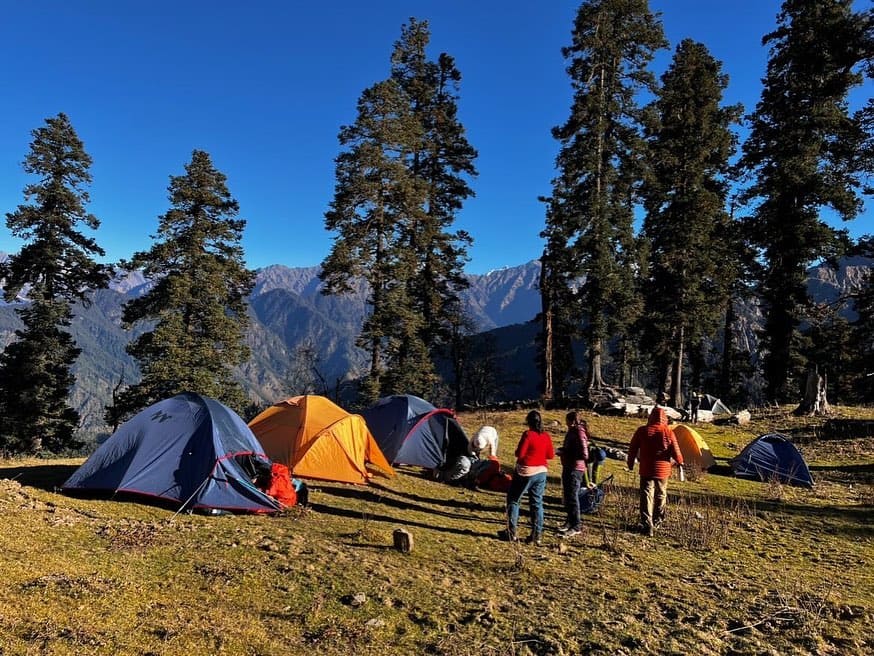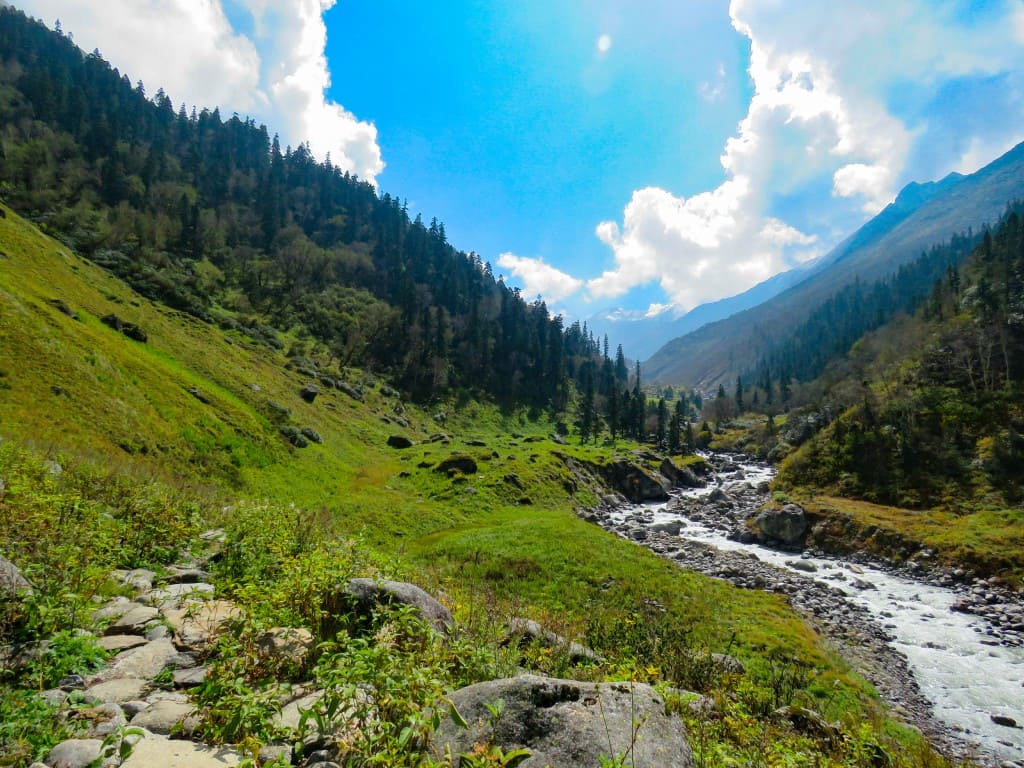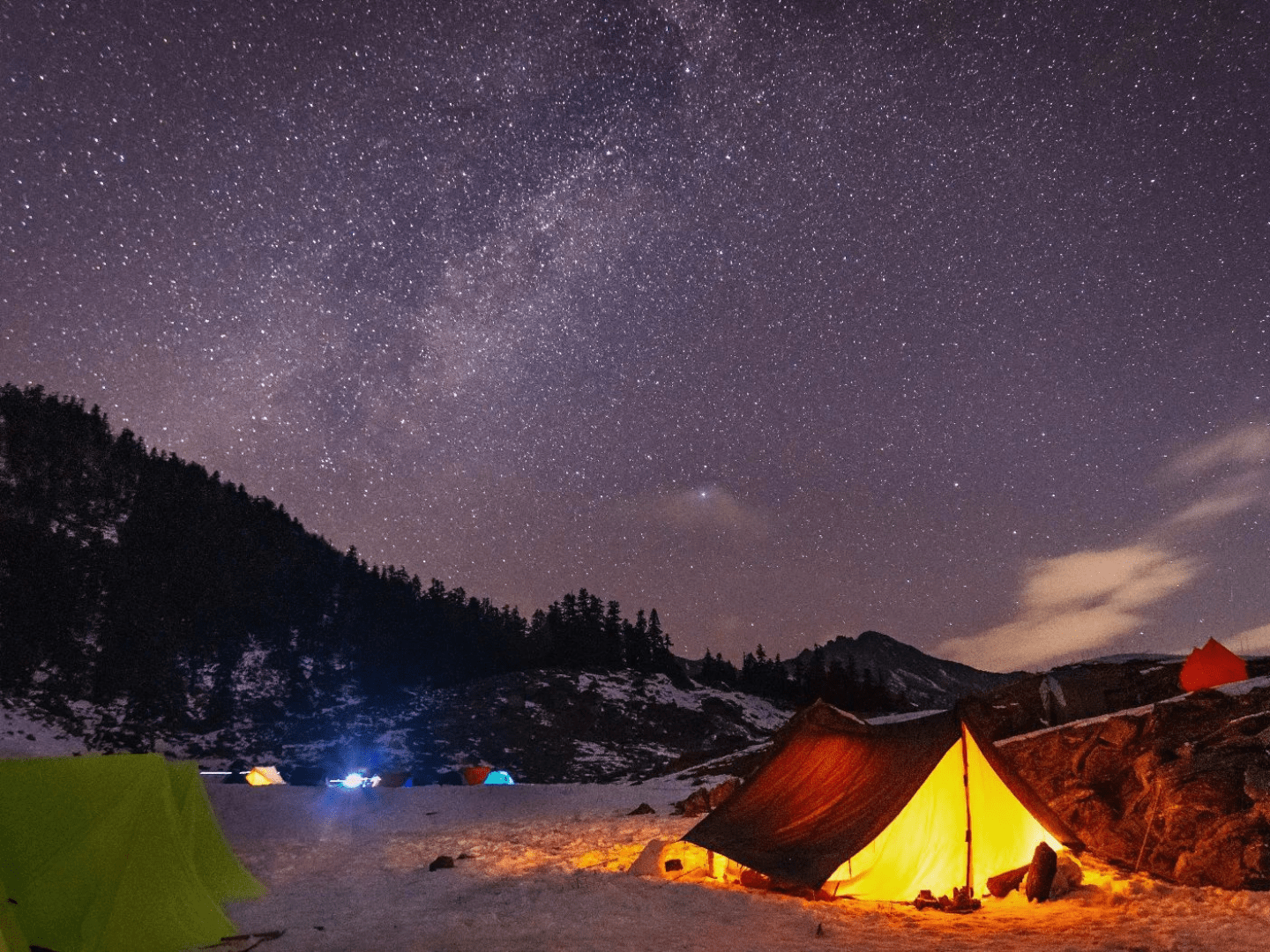Har Ki Dun Trek
Har Ki Dun Trek
₹ 10,499 /person | 7D - 6N | Dehradun to Dehradun
₹ 10,499/PP
7D - 6N | Dehradun to Dehradun
- Pickup Time : 7:30 To 8:00 AM
- Dropping Time : 7:30 To 8:00 PM
- Pickup & Drop Location : Dehradun Railway Station
- Inclusion & Exclusion
- Food provided by Indian Treks
Need Help Talk to our Mountain Expert
- +91- 7310954451 | +91-7300900108
BE UPDATED FOR THRILLING EXPERIENCES!
Follow Us On
➩ Description
- Altitude : 12100 ft.
- Duration: 7 Days
- Trek Length: 35km
- Base Camp: Sankri
- Trek Difficulty : Easy to Mod.
Har Ki Dun Trek: Walk in the Footsteps of the Pandavas
The Har ki Dun trek is a trekker’s paradise that will make you fall in delight its beauty. The thing that makes it a captivating journey is its accessibility both in summer as well as the winter season. Har Ki Dun Valley is situated on the western flank of the Garhwal Himalayas and is very popular with trekkers as well as climbers. The walk to Har Ki Dun Valley is a beautiful one with fascinating views of the Swargarohini group of peaks. The Har Ki Dun catchment area is a major source of the Yamuna River System.
The Har Ki Dun journey passes through some of the most picturesque pine woods and alpine meadows, which are a visual feast. When the light peeks through the clouds throughout the winter, the snow-covered paths of the Har Ki Dun Trek are captivating. The Valley of Gods, one of the oldest treks in the Himalayas, is said by some to be the same path the Pandavas took on their way to paradise in the Mahabharata. You may experience hiking in Uttarakhand, the land of gods, as never before thanks to Swargarohini, the snow mountain that dominates the Har Ki Dun Trek and carries a legacy of the mythical ladder to heaven.
Read MoreAmazing views of Swargarohini I and II peaks may be seen during the trek. According to legend, this is the path the Pandavas used to climb to the sky via the Swargarohini peaks. The renowned connect to the Har Ki Dun Trek makes the trek much more exciting. Additionally, you can see the Hata Peak, providing a beautiful backdrop and covers the skyline. The magnificent Jaundhar Glacier is seen from the Har Ki Dun Valley and is only 13 kilometers ahead of us. The Tons River is largely influenced by this glacier.
The temple in Osla, which is devoted to Someshwar temple and was constructed by the people of Saur, is one of the additional attractions on the Har Ki Dun Trek. Taluka, which is located on the steep mountain route to Har Ki Dun, is around 13 kilometers away. This 5,000-year-old structure is made up of elegantly carved wooden compartments.
The challenge of Har Ki Dun, besides to the long hours of trekking for 6 hours, is dealing with the rain. Har ki Dun Trek is most popular during the summer, which is frequently rainy. Trekking under verdant vegetation soaking with raindrops is a magnificent experience in India, but hikers must be well equipped. Before embarking on the Har Ki Dun Trek, bring rain gear such as a poncho, waterproof coverings, anti-diarrhea medications, and water-resistant walking boots. Whatever the weather, Har Ki Dun will undoubtedly transport you to a magical place.
Along the Har Ki Dun Trek, you will pass through some of the most isolated villages in the country, like Taluka, Gangar, and Osla, providing you with the greatest Uttarakhand trekking experience. You will get to know the distinct lifestyles and traditions of these mountain villages. The residents of the villages are very kind and welcoming. Har Ki Dun Trek Valley is a cow grazing area, and when it is not snowing, shepherds bring their animals to the meadows of Har Ki Dun.
About The Trek
The Har Ki Dun Trek starts in the village of Sankri, and our team will meet you in Dehradun for pickup. You will be transported to Sankri, where we will check in at a hotel. The journey to Har Ki Dun journey begins the following day, as we travel from Sankri to Pauni Garaat via Taluka. On the Har Ki Dun Trek, you may come across wild orchids and, if you’re lucky, wildlife like as barking deer, leopards, bores, and much more. The Himalayan Monal, the state bird of Uttarakhand, may also be seen in the forests of the Har ki Dun Trek. We’ll also cross the Tons River along the route. From Pauni Garaat, we will go towards Kalkattiyadhar.
For the most part, the journey to Har Ki Dun takes you through dense coniferous forests and past the Supin River. Osla is located on the other side of the river, and after crossing the river, you will arrive in Osla and go towards Kalkattiyadhar. The next day, we will begin our trek towards Har Ki Dun and return to Kalkattoyadhar, covering a distance of 14 kilometers. The next day, we will descend to Pauni Garaat and spend the night before continuing on to Sankri via Taluka, bringing our trekking days in Uttarakhand to a conclusion. Stay the night in Sankri, tour the hamlet and local market, then return to Dehradun the next day to complete the Har Ki Dun Trek.
➩ Itinerary
Dehradun to Sankri: Begin Your Path to a Himalayan Haven
Elevation: 6,400 feet/1,950 meters.
Drive Time: around 10 hours; 220 kilometers.
Purola was the last ATM.
There are little stores selling miscellaneous items and trekking gear.
JIO is the network. Dinner included, excluding breakfast and lunch.
At six in the morning, trekkers will be collected in a Tempo Traveler or comparable car from Prince Chowk in Dehradun.
Arrival in Sankari is anticipated by 5:00 p.m.
Remain at the Sankari guesthouse. The 10-hour drive from Dehradun to Sankri starts the first day. It is anticipated that you would arrive in Prince Chowk, Dehradun, by six in the morning. You can reserve an overnight bus or train from Delhi to Dehradun ISBT in order to arrive on time.
There are 220 kilometers between Sankari and Dehradun, and it takes roughly 10 hours to travel there. You will gain 1950 meters in altitude.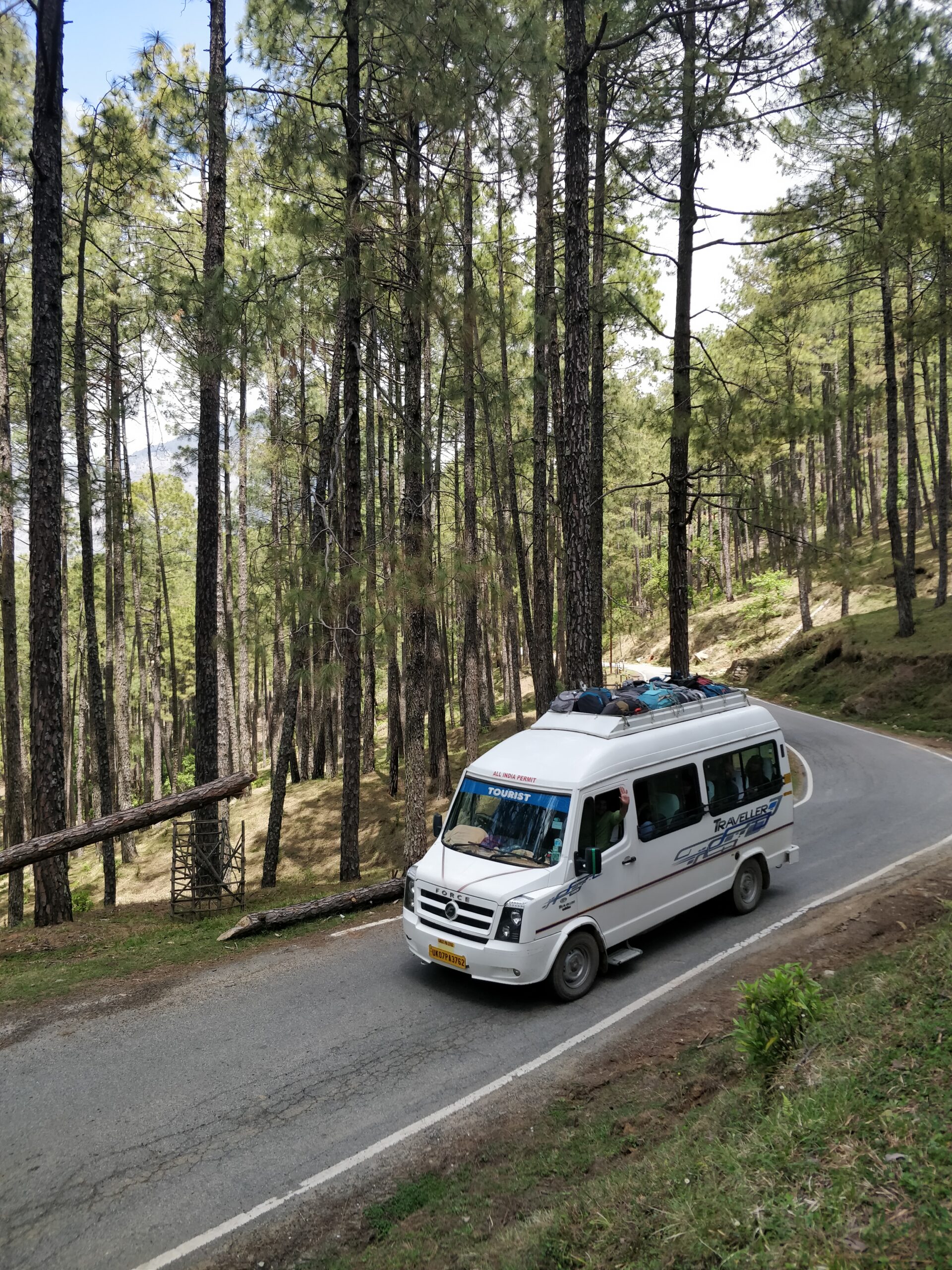
After entering the Uttarkashi district through Mussoorie, often known as the "Queen of the Hills," and the stunning Kempty Falls, we will proceed through Naugaon, Purola, Mori, and Netwar before arriving at the trek's starting point, the village of Sankri. The route is comprehensive and passes through a scenic area with pine tree forests beginning on both sides. It runs parallel to the Tons River's course. The landscape dramatically changes after Mussoorie, as the deep gorges give way to pine trees, which fill the air with the fragrant aroma of pinewood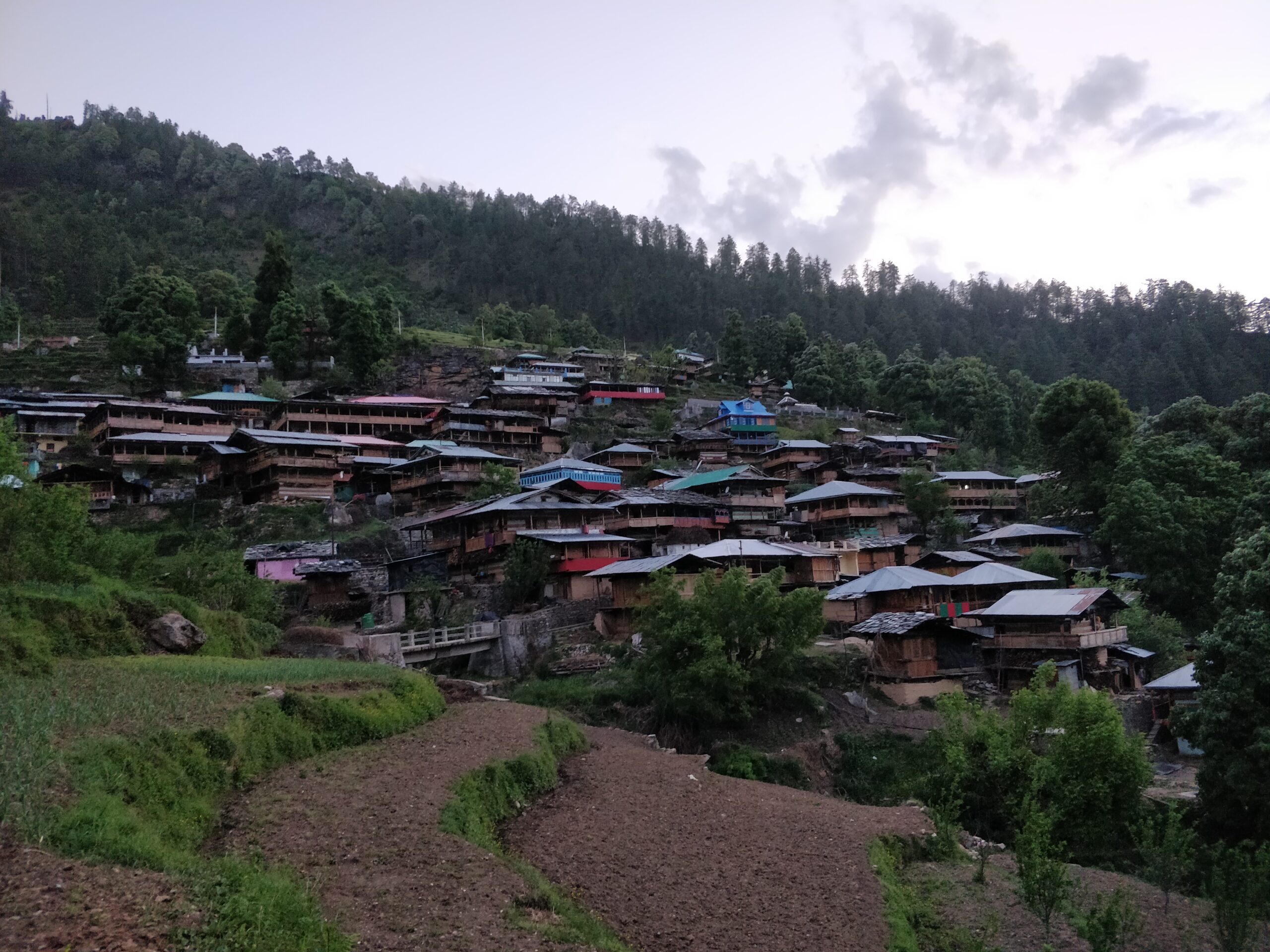
We will stop at an inn by the road for lunch at a convenient hour. Once you reach to Purola, you should stop using the internet and make any crucial calls because the connection will become erratic. In this area with few carriers, BSNL is the sole effective service offered. The road becomes really picturesque on the last 20 kilometers to Sankri. We will pass the Govind National Park checkpoint a short distance before Sankri, and the drive will come to a conclusion there at around six o'clock in the evening. The base camp for many Himalayan hikes is Sankri, a charming Himalayan village. Beautiful views of Mount Swargrohini may be seen from the village. In the event that you are trekking throughout the winter, you should anticipate snow right from Sankri itself. After freshening up at the guest house, you will get sufficient time to explore the market close by. Trekking essentials, garments, and equipment are available at the bazaar in Sankri, in case you need last-minute shopping for the venture ahead.
Driving from Sankri to Taluka: 12 km, 1 hour.
Taluka is 2,200 meters (7,200 feet) above sea level, while Pauni Garaat is 2,500 meters (8,200 feet).
Trek Time: 5–6 hours; Distance: 10 kilometers.
Gain in altitude: 550 meters/1,800 feet.
Trek Level: Most of the trek is a gentle incline with easy level walking.
Lunch was packed on the way.
pts for springwater.
Camping by a river in Govind National Park.
At 7 a.m. on the second day, we begin our travel from Sankari to Taluka. The short drive from Sankari will present you to the terrain of our trip up close, with streams slicing through the path over stones and gradually thickening trees. The drive takes around an hour.
When trekkers get in Taluka, another community along this route, The first lapse is a descent to the banks of the beautiful Tons, and with the river on the right, the trail enters a level walkthrough forests of conifers until it reaches the first cemented bridge. About ten minutes into the walk, you will notice the first cemented bridge over a small mountain stream, and after crossing the stream, the trail leads up to another wooden bridge 15 minutes into the trek, where a gentle slope descends to the waters, where you can fill your bottle and continue. Trekkers will be invited to gather refreshments before beginning the hike upon arriving at
Tons River is an excellent place to see Himalayan wildlife and has beds of colorful orchids in the spring and summer.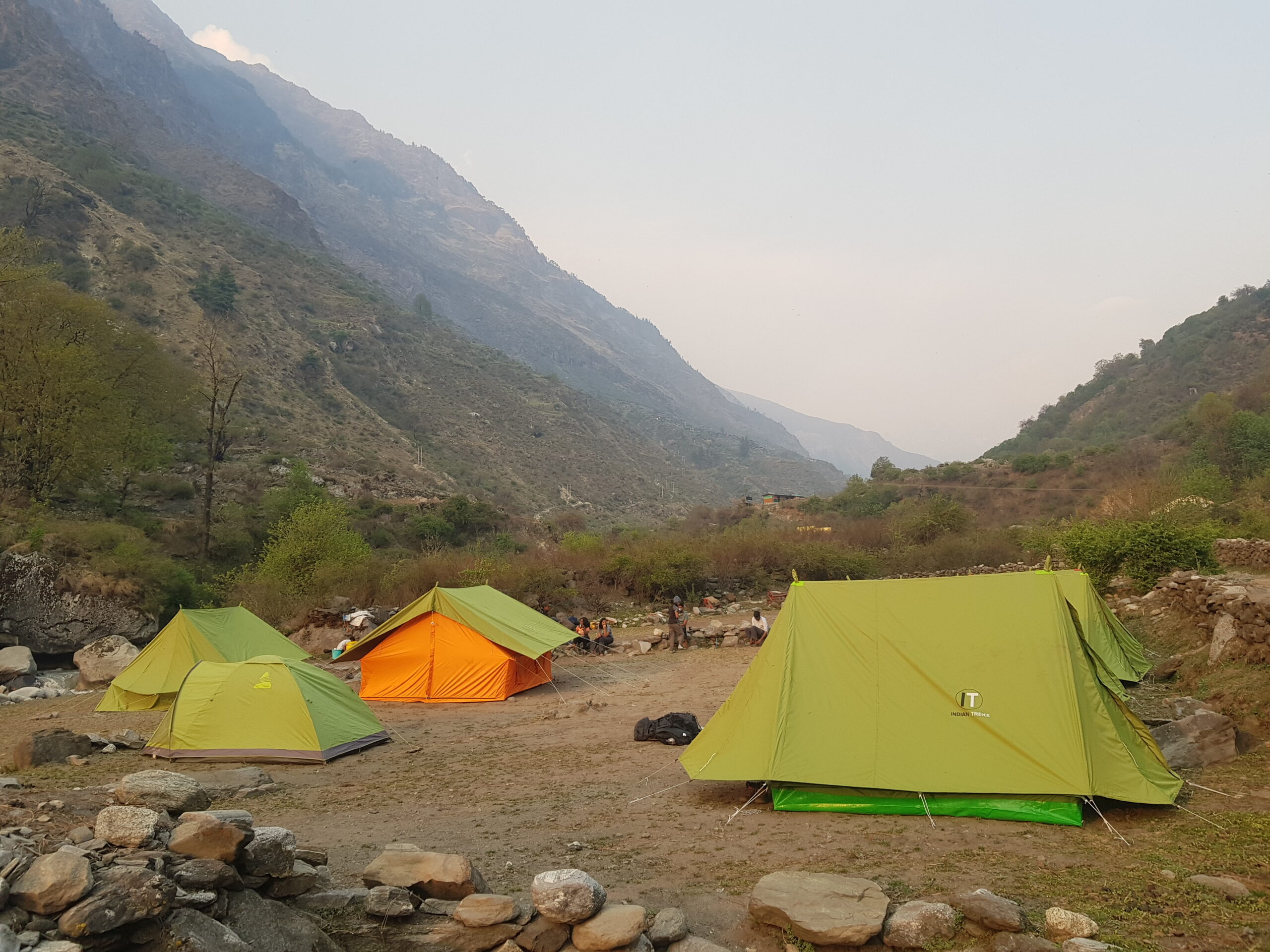
The entire stretch of the river offers shade and is perfect for photo compositions. It is about 1 pm when we cross the Supin tributary and head toward the lunch rest area. One of the many food shacks we will come across on our journey to the valley is perched atop a rocky cliff overlooking the rivulet's banks. These stores have packaged food and beverages along with delightful hot snacks. In addition to our packed lunch, this will add a different twang of delight to outdoor meals on the move. As the journey continues, harvest fields of corn, millet, and potatoes will appear along the route, giving the entire area a ranch house atmosphere. You will be in utter awe of the Himalayan hamlets' verdant step farming. Welcome to the first camp! Pauni Garaat, a verdant clearing on the banks of Supin at its most vibrant, arrived late in the afternoon as the sun started to set.
Elevation: 9,850 feet or 3,000 meters.
Trek Length: 5–6 hours; 8 kilometers.
Gain in altitude: 500 m/1,650 ft.
Packed a lunch.
pts for springwater.
Trek Level: Well-balanced between level walks and inclines, although a steeper climb than the previous day.
Camp beside a food stand in a forest with a view of the mountains.
The 8-kilometer journey from Pauni Garaat to Kalkattiyadhar takes six hours, beginning at six after breakfast. Until it reaches the village of Seema, the trail winds through dense coniferous woodland. On the banks of the Supin River sits Seema Village, a collection of concrete buildings and a guest house run by the forest department. On the opposite side of the river sits Osla settlement. With massive snow-covered mountains in the backdrop, the Seema Bridge, a hanging bridge over the Supin River, is a great place to shoot stunning photos. The trail passes through three "garaat," or hydroelectricity-run chaffing plants, where the locals separate millet and maize husks before grinding them into flour. The journey continue past harvest plains, cattle grazing, and slant-roofed homes used as granaries and storage, all while maintaining the picturesque atmosphere of the surrounding area. Additionally, you'll see a lot of amaranth trees, and in the The trees turn reddish during the monsoon, which creates a striking contrast to the surrounding landscape.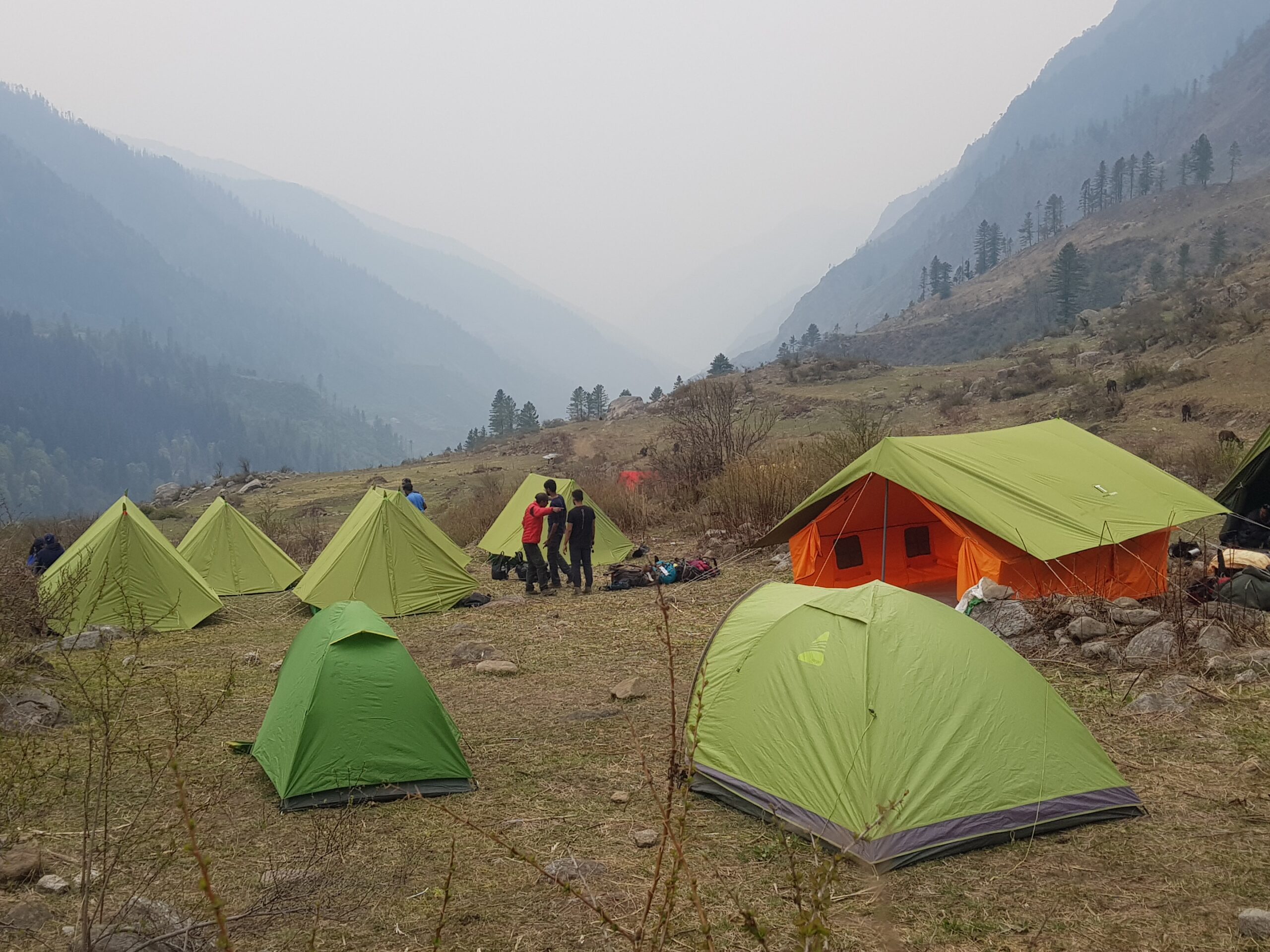
A magnificent vista of the Swargarohini group of peaks and Mount Bandarpoonch appears approximately thirty minutes into the hike. The peaceful settlement of Osla is located just between cashew and walnut forests. There is a fascinating legend associated with Osla village. It is thought that in the past, there was a clan in Osla village that was devoted to Duryodhan of the Kauravas. They were so devoted to him that they constructed a temple in his honor, and they still preach Duryodhan in this area today. In addition to the stories, the settlement contains a few dwellings and a temple dedicated to Someshwar that dates back 2000 years. The temple possesses 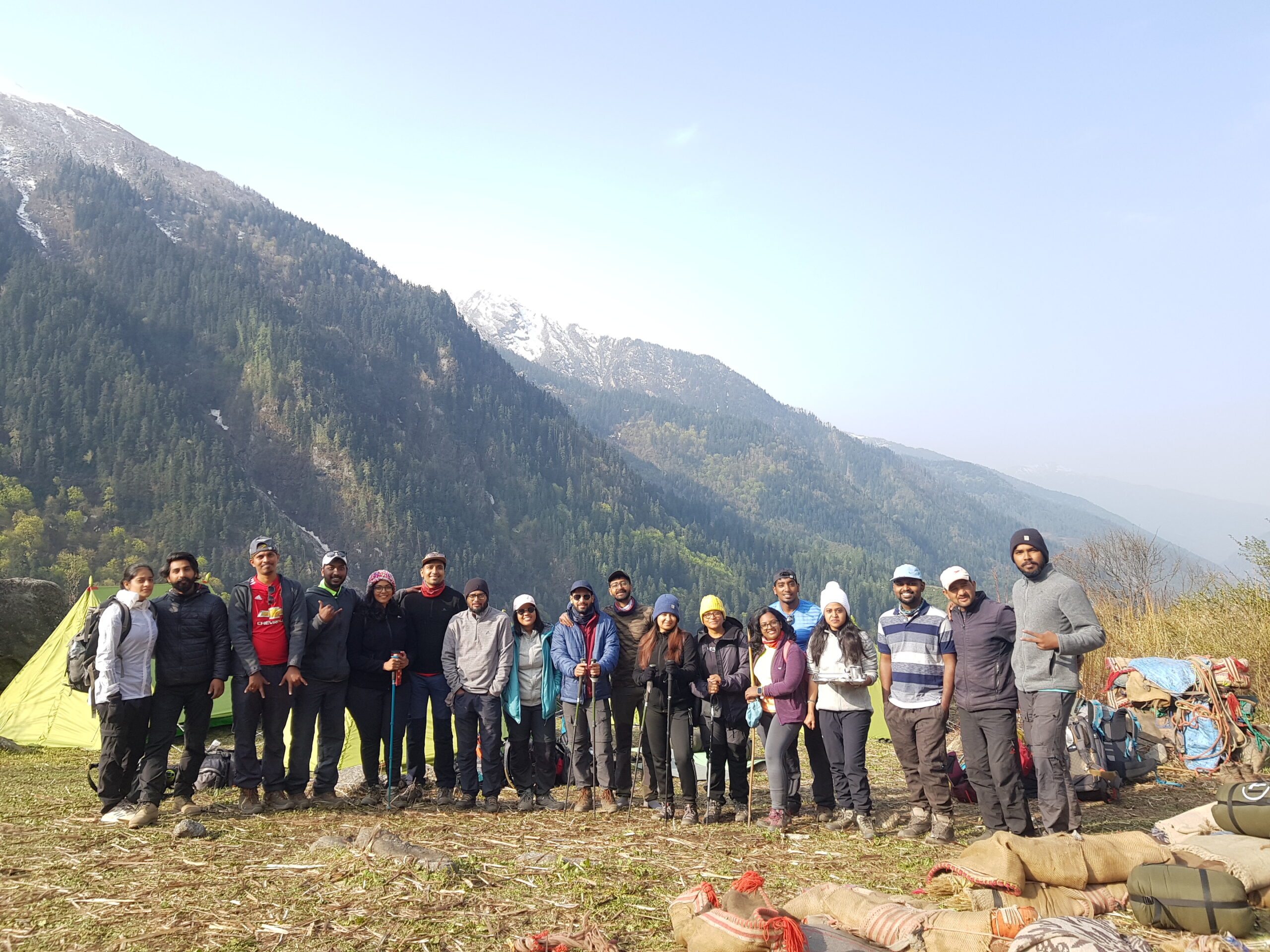 a distinctive architectural design. In addition to being hospitable, the locals dress in a way that honors their cultures and traditions. The main pooja is performed once a month when the village's ruler visits. Continue climbing after a little conversation with the locals.
a distinctive architectural design. In addition to being hospitable, the locals dress in a way that honors their cultures and traditions. The main pooja is performed once a month when the village's ruler visits. Continue climbing after a little conversation with the locals.
The trail gets rather steep from Osla, and you can enjoy amazing views of the Dhauladhar Range in front of you from this rise. From here, there are also winding paths leading to Baspa Valley and Borasu Pass. The high trail descends further to Kalkattiyadhar, a tabletop green stretch. This is the second-day campground. The stunning wide meadow of Kalkattiyadhar offers views of well-known peaks including Bugyal Devsu and Mount Black Peak. The Ruinsara Range and the Kedarkantha Summit are visible on the left. Enjoy the scenery, get enough sleep, and get ready for the summit the next day.
Har Ki Doon To Kalkattiyadhar And Back To Kalkattiyadhar | Summit Day
Elevation: 11,800 feet (3,600 meters).
Trek Length: 8 to 9 hours; 10 kilometers.
Lunch was packed on the way.
pts for springwater.
Trek level: a leisurely trek through the woodland with some bouldering. a gentle ascent on a mixed gradient.
Camp close to a food stand in a forest with a view of the mountains.
Swargarohini, Hata Peak, and Black Peak are visible snow peaks.
Since today is the longest day of trekking, you will begin earlier than on other days. As soon as breakfast is finished, we start the hike. But prepare to experience something more, even though the vistas were captivating up until today. The trail will enter the glacier basin, which is home to alpine meadows and moraines. Every step you take will be greeted by towering pine trees.
Beginning in the Ruinsara Valley, the trek ascends above the point where the Supin and River confluence. Beautiful views of the mountains will begin to appear from this point on. Up to the Har Ki Dun Valley, the trail consists of both mild and difficult ascents. Snow areas and ice waterfalls can be seen as you ascend higher. In the winter There is a lot of snow on these areas. The Har Ki Dun Valley is a divine location that exhibits breathtaking beauty all at once. Swargarohini, Hata Peak, Black Peak, and other massive peaks offer breathtaking views. The valley is a breathtaking combination of glacial moraines, coniferous forests, ice streams, meadows, and towering peaks. Although it is not as steep, the trail eventually reaches a 45-degree gradient, which makes it more challenging when there is snow. To reach the summit of Har Ki Doon, the final portion of the journey ascends alongside a river and through thick trees. You may enjoy breathtaking views of Hata Peak, Black Peak, and Swargarohini I Peak from the highest point. Attempt to absorb
Retrenchment From Kalkattiyadhar To Pauni Garaat Through Osla
Elevation: 8,200 feet/2,500 meters.
Trek Length: 5 hours, 8 kilometers.
Altitude Loss: 500 m/ 1,650 ft.
packed a lunch.
pts for springwater.
Camping by a river in Govind National Park.
The route really descends back down from this point. We will retrace our travels to Pauni Garaat today, passing through the town of Osla. This is an additional opportunity to recollect the moments spent with the tranquil peasants. Bid farewell to them and the breathtaking surroundings. To witness a stunning sunrise at the Kalkattiyadhar campground, get up early. In the winter, the temperatures are below freezing, and the mornings are typically mild.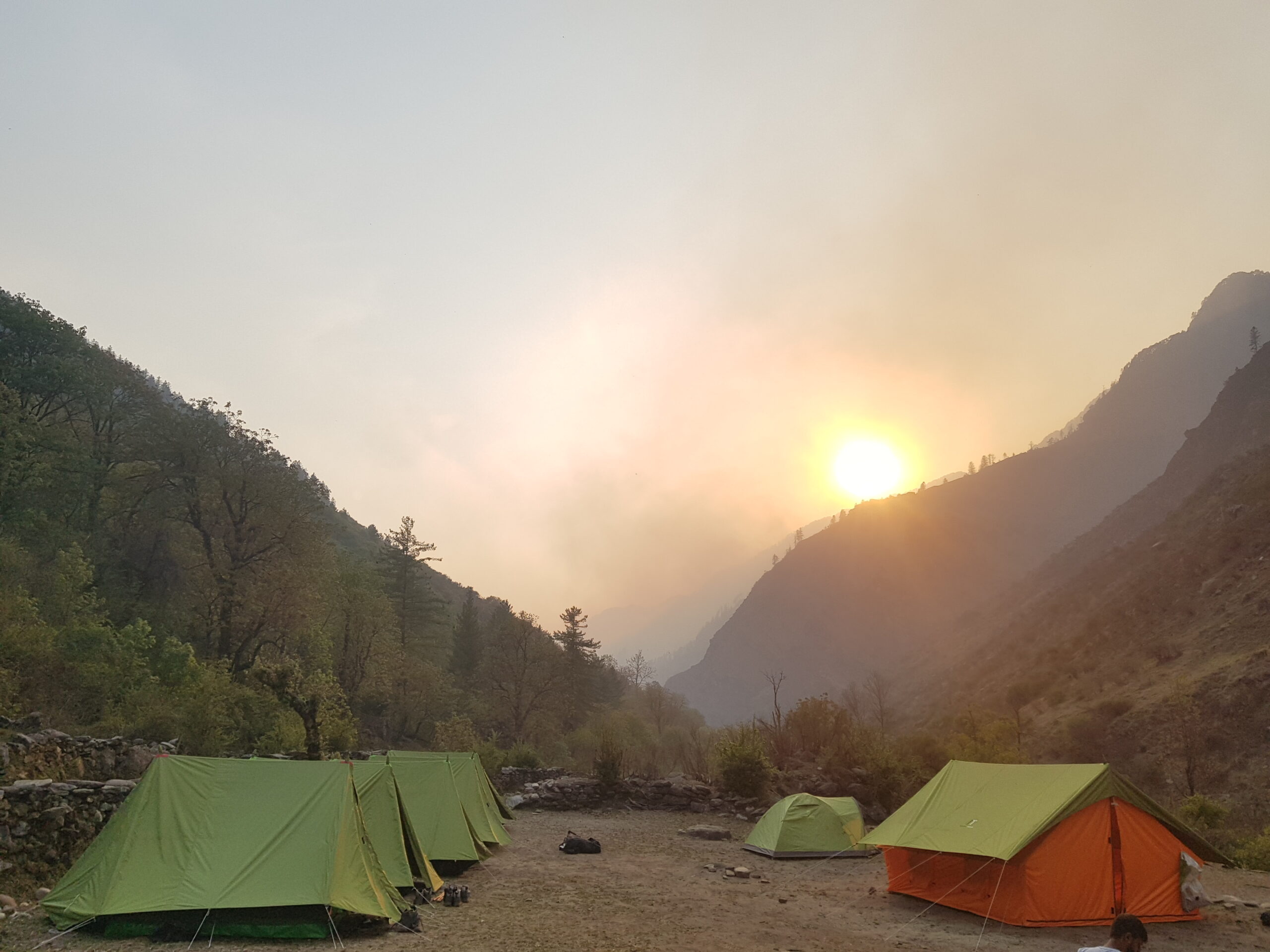
To get to the Pauni Garaat campground, continue on the same path as before. It climbs downhill, making the descent very simple. Make a steady descent to Pauni Garaat. Savor your final minutes of mountain nightlife. Additionally, while the hike isn't particularly difficult or Spend some time today exploring the village of Osla. Visit the Someshwar temple, which is devoted to Lord Shiva. The walls of the temple include exquisite detail carvings. Stay the night at the campsite at Pauni Garaat.
Elevation: 6,400 feet/1,950 meters.
Trek Length: 5 hours, 10 kilometers.
The drive from Taluka to Sankari is 12 kilometers and takes one hour.
packed a lunch.
pts for springwater.
Stay at a guesthouse.
This morning begins a five-hour hike to Taluka, which descends down the well-traveled path and stops at well-known rest areas. Following breakfast, we start down the same route in the direction of Taluka. Along the walk, be on the lookout for "bicchu ghas," which can hurt you for twenty-five minutes at the least touch.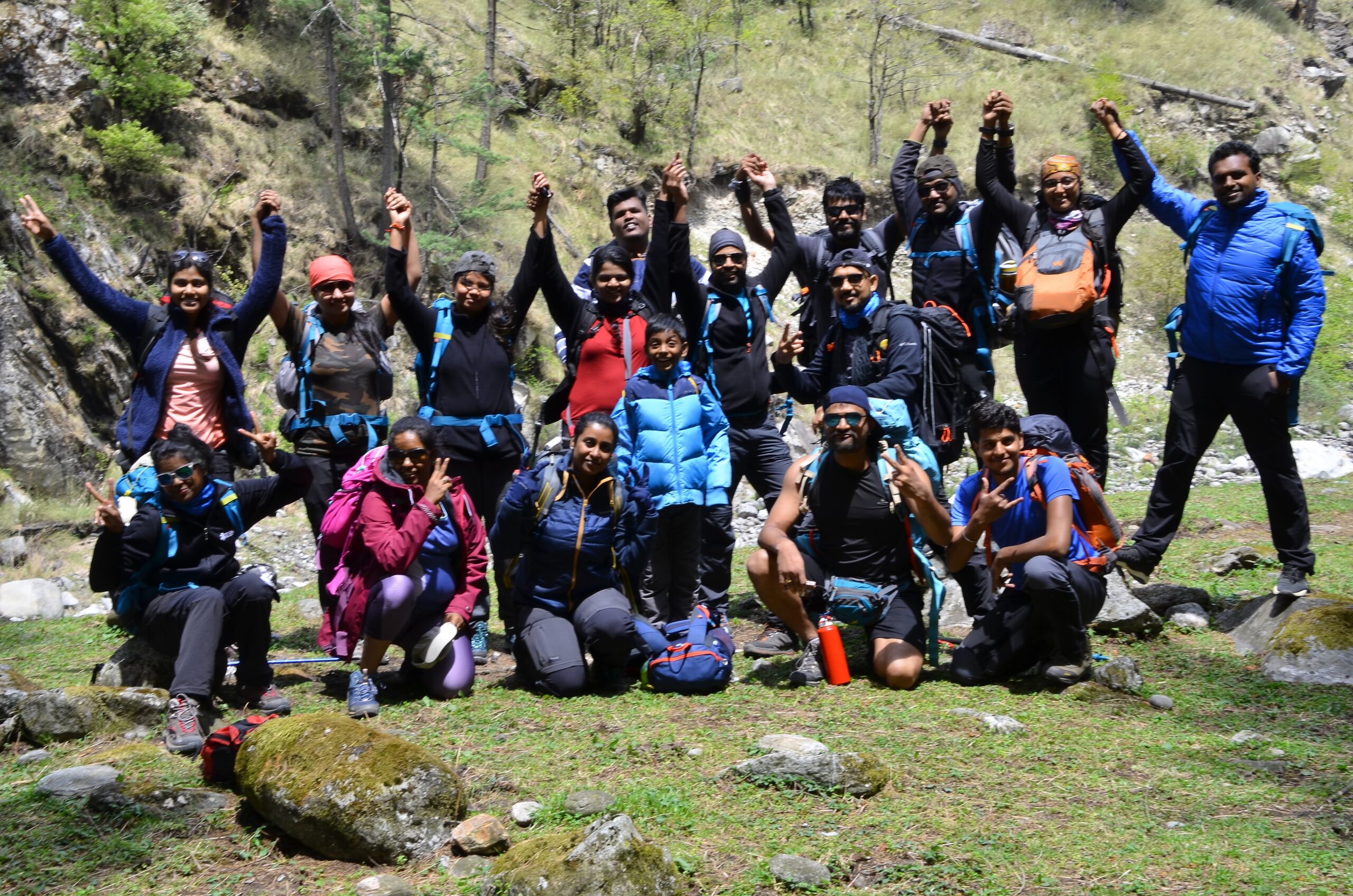 Despite the fact that the plant is not toxic, residents actually prepare it. You will soon be at the Supin River after a few hours of trekking; the last portion before Taluka crosses a concreted path.
Despite the fact that the plant is not toxic, residents actually prepare it. You will soon be at the Supin River after a few hours of trekking; the last portion before Taluka crosses a concreted path.
Driving From Sankri To Dehradun | Bidding Farewell To The Mountains
Driving time: 7 am to 6 pm; distance: 220 km; estimated time: 10 hours.
Lunch and breakfast are not included.
You will be dropped off in a Tempo Traveller or a comparable car at the Dehradun station.
With many fond memories, we say goodbye to the mountains today. The 10-hour drive from Sankri to Dehradun marks the end of the trip. Lunch and breakfast will arrive soon. It will arrive at Dehradun station at 6 p.m., which is appropriate for an overnight trip to Delhi.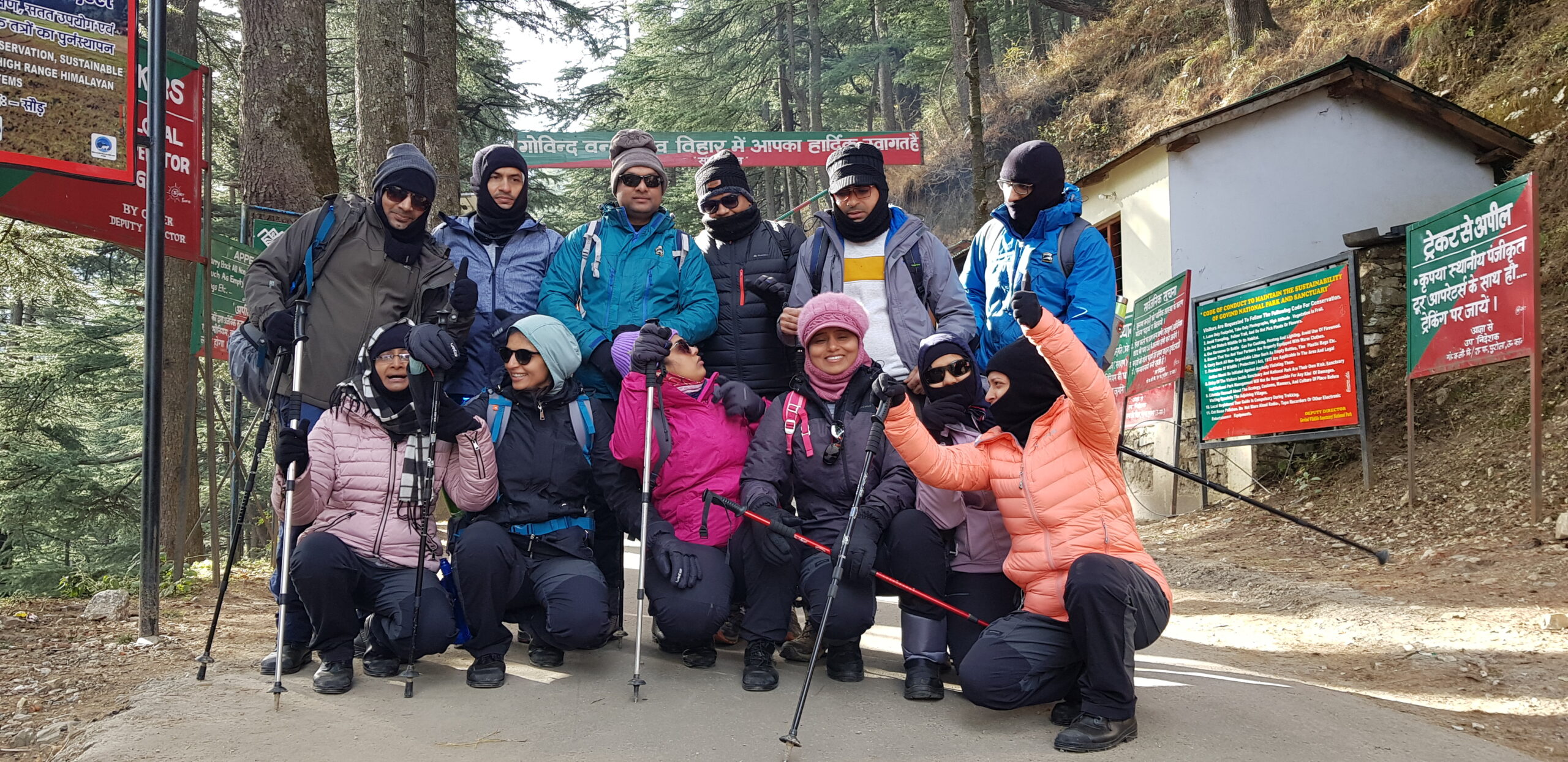 Plan your trip from Dehradun Bus Stand by 9 PM just to be safe. This will assist in accounting for any delays.
Plan your trip from Dehradun Bus Stand by 9 PM just to be safe. This will assist in accounting for any delays.
➩ Inclusion
- 7 days premium trek
- Double sharing basis of tents through the trek.
- Dehradun to Sankri & Return Transport in Tempo/Bolero/Sumo Vehicle
- All meals – vegetarian
- Campfire at Camps (If Available)
Read More
➩ Exclusion
- GST is required at 5%.
- any meals or lodging not specifically listed in the program or on the itinerary.
- Any bus or airfare to and from the start or ending of the trek
- Your medicine is covered by personal medical expenses.
- Any personal services such phone calls, laundry, alcohol, mineral water, etc.
- Any fees for still or video cameras
- Any entrance fees Pay immediately at monuments, monasteries, museums, and temples.
- Any fees associated with an emergency evacuation
- any services not mentioned in the section on cost inclusion.
➩ Fitness
As you climb to higher altitudes, the air grows thinner and less oxygen is present. The amount of oxygen in our blood is equivalent to the proportion of haemoglobin that is saturated with oxygen. At altitudes above around 2,100 metres (7,000 feet), the amount of oxygen carried by our blood starts to decrease. At the same time, the human body possesses both immediate and long-term adaptations to altitude that help it somewhat compensate for the shortage of oxygen.
Read More
A Great First Trek for Anyone Who Wants to Get Into Hiking:
➩ Safety
Points to remember for safety in the trek:
- It is essential that you arrive at the starting point of any hike or excursion in the best possible physical condition and readiness.
- The hike is not tough; in fact, if you can keep both your feet and your mind calm and strong during the journey, you will discover that the hike is rather simple.
Read More
➩ How to Reach
Directions to go to Dehradun:
- By Air: Jolly Grant Airport is the domestic airport that serves Dehradun, and it receives frequent flights from the main metropolises located across India.
- Traveling by Train: The Dehradun junction is the closest railway station, and it has excellent connections to major cities located around India.
- By Road: The road network in and around Dehradun is extensive and convenient. To get to Dehradun from Delhi or any of the other surrounding cities, you have the option of either driving there yourself or hiring a cab or taxi. In addition, there is a consistent bus service between Dehradun and the surrounding areas because to the extensive road network.
➩ FAQ's
The Garhwal region of Uttarakhand, India, is home to the stunning valley of Har Ki Dun. It is renowned for its breathtaking natural beauty, meadows, pine trees, and vistas of the Himalayan ranges. It is situated at an elevation of roughly 3,566 meters (11,700 ft).
What makes Har Ki Dun well-known is:
has tranquil hiking routes that provide stunning scenery.
being abundant in biodiversity and a haven for birdwatchers.
It is thought to be the route the Pandavas from the Mahabharata used to reach heaven, giving it mythological significance.
To reach Har Ki Dun, you need to:
- Travel to Dehradun, which is the nearest major city with good connectivity by train, flight, or bus.
- From Dehradun, drive to Sankri, the starting point of the trek (approximately 200 km, 7–8 hours).
- From Sankri, you will trek for 5–7 days to explore Har Ki Dun valley.
When is the ideal time to go to Har Ki Dun?
April through June is the best time of year to trek and take in the clear skies.
September through November is the post-monsoon season, which is ideal for photography and verdant scenery.
Steer clear of the July–August monsoon season because of the high rainfall and landslides.
Yes, Har Ki Dun is considered a moderate trek, making it suitable for beginners with reasonable fitness levels. However, proper preparation, acclimatization, and guidance from experienced trekkers or local guides are essential.
While on the trek, accommodations are typically:
- Camping in tents at designated spots.
- Basic guesthouses or homestays in villages like Osla or Sankri.
You need to carry essential trekking gear or book through trekking companies for organized trips.
Among the necessities are:
Rain gear, thick clothes, and trekking shoes.
A backpack, trekking poles, and a sleeping bag.
Energy bars, water bottles, and personal medications.
Basic hygiene, a camera, and sunscreen.
Yes, trekkers need to obtain forest permits and pay an entry fee as the trek passes through Govind National Park. Trekking companies often arrange these permits for you.
- Stunning views of peaks like Swargarohini and Bandarpoonch.
- Ancient villages like Osla and Gangad, rich in culture and tradition.
- Lush meadows, alpine forests, and crystal-clear streams.
Yes, Har Ki Dun is often referred to as the "Valley of Gods" because it is believed that the Pandavas from the Mahabharata passed through this valley on their way to heaven via Swargarohini Peak.
Yes, you can combine Har Ki Dun with nearby treks such as Ruinsara Tal, which is a serene glacial lake, or Bali Pass Trek, for a more challenging adventure.
Har Ki Dun is home to diverse wildlife, including Himalayan black bears, musk deer, langurs, bharal (blue sheep), and various bird species such as monals and Himalayan griffons.
While it’s possible to trek solo, it’s not recommended due to the remoteness, changing weather conditions, and need for navigation skills. Hiring a guide or trekking with a group ensures safety and a more enjoyable experience.
Yes, villages like Osla and Sankri celebrate traditional Himalayan festivals, such as Phool Dei (welcoming spring) and other local fairs that showcase their unique culture, music, and rituals.
Typical difficulties include the following:
steep climbs and descents during the journey.
Unexpected weather changes, like rain or snow.
restricted availability of facilities in isolated locations, such as food or medical assistance.
Being athletic and well-prepared can help you overcome these obstacles.
➩ Note
In the normal course of things, IndianTreks anticipates that you will be the one to carry your own personal gear; but, if you want to unload your backpack, you may give it to the mule.
Charge of offloading Backpack
- 2000 INR (Indian Rupees), provided that the payment is made online ten days in advance
- INR 2500/- If you inform us after reaching Sankri.
- There is a need for a waterproof cover on the backpack; luggage and stroller bags are not permitted.
Special offers
- You just need to make one payment, and you may go on the tour as many times as you want.
- If you schedule a trek with Indiantreks and are unable to finish that trek, or if you have successfully completed that journey and wish to do it again, you are free to repeat that trek an unlimited number of times without incurring any additional fees for doing so.
Read More
Terms and conditions To book a trek or an adventure programme, please use our online booking form; if you prefer, you may also give us a call at the number provided. To confirm your reservation, you will need to wire a deposit in addition to the original payment.
➩Upcoming Departures for Har Ki Dun Trek
- 05 Apr 2025 (Booking Open)
- 06 Apr 2025 (Booking Open)
- 12 Apr 2025 (Booking Open))
- 13 Apr 2025 (Booking Open)
- 19 Apr 2025( (Booking Open)
- 20 Apr 2025 (Booking Open)
- 26 Apr 2025 (Booking Open)
- 27 Apr 2025 (Booking Open)
- 03 May 2025 (Booking Open)
- 04 May 2025 (Booking Open)
- 10 May 2025 (Booking Open)
- 11 May 2025 (Booking Open)
- 17 May 2025 (Booking Open)
- 18 May 2025 (Booking Open)
- 24 May 2025 (Booking Open)
- 25 May 2025 (Booking Open)
- 31 May 2025 (Booking Open)
- 01 Jun 2025 (Booking Open)
- 07 Jun 2025 (Booking Open)
- 08 Jun 2025 (Booking Open)
- 14 Jun 2025 (Booking Open)
- 15 Jun 2025
- (Booking Open)
➩ Things to carry
PARTICIPANTS MUST BRING FOR HAR KI DUN – TREK
- 50–60 ltrs backpack
- Strong hiking boots: a leather upper is best because it gives your ankles more support. If you don’t have a pair yet, you should get one as soon as possible and wear it a lot so that it breaks in well. This will help keep blisters from forming.
- Tennis shoes or sandals that are light enough to wear in camp
Read More
➩ Explore the Most Informative Articles About The Har Ki Dun Trek
The Har Ki Doon Trek in Uttarakhand is the one you should pick if you want to see Indiantreks in the most picturesque manner. Trekkers can discover a wide range of topics on the Har Ki Dun Trek, including mythology, animals, mountains, fauna, forests, snow, flora, old buildings, large meadows, etc. Let's examine every aspect of the Har Ki Dun Valley Trek down below:
The Har Ki Dun Trek, also called the Valley of Gods Trek, is situated in Uttarkashi district, Uttarakhand, in the Garhwal Himalayas. Har Ki Dun is also referred to as the Valley of Shiva because of the stunning Someshwar Temple, which is devoted to Lord Shiva. At 3500 meters, Har Ki Doon is a trekker's dream come true because it's a stunning journey alongside the Supin River. Numerous Himalayan flora and animals, fascinating views, historical villages in the highest mountains, expansive meadows, trekking beside a river, etc., may all be seen on this walk. The Har Ki Dun Valley is home to a vast variety of full-blooming plants and a wide variety of fauna during the summer months. In the winter, you can witness stunning snow-capped
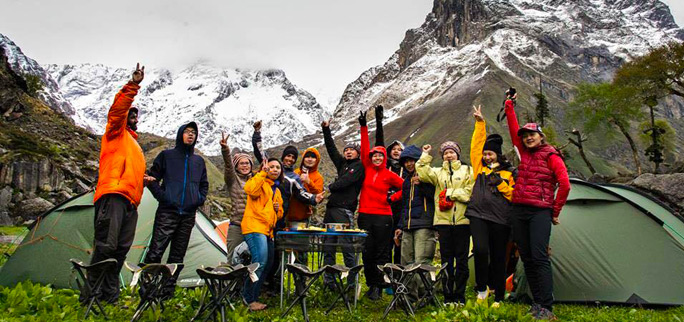
Mid-April to mid-June is the ideal time of year to trek Har Ki Doon Valley because the lower portions of the valley have already melted, providing hikers with a pleasant trail. Mid-September to mid-November is also a good time to go Har Ki Doon Trekking because it's the post-monsoon season, when there won't be any rain and you may have a smooth trekking experience.
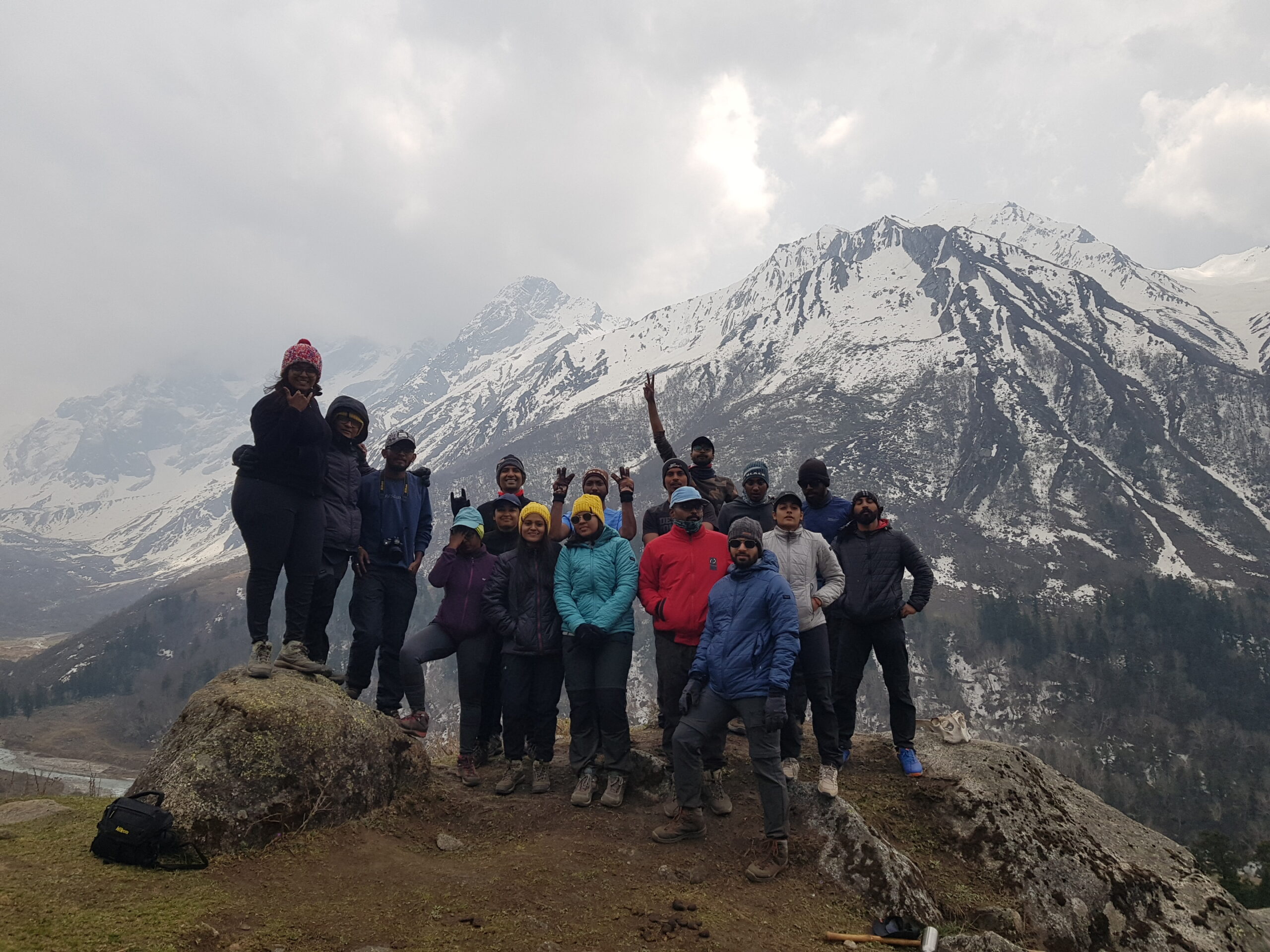
Get the best trekking experience ever by booking a Har Ki Doon trek package from Trek the Himalayas if you're thinking about trekking to the Har Ki Doon valley. You may complete the Har Ki Dun trip in seven days with our trek package. Since the weather in Har ki Dun is good in both seasons, you can choose to go on this walk during the pre-monsoon or post-monsoon seasons. You are not required to have any prior trekking experience for this excursion. However, having a healthy body and a nice physique is beneficial.
The Har Ki Dun Trek is as good as it sounds, but you must be ready. The Har Ki Dun Trek is a moderate hike that begins in Sankari and concludes there as well. What additional considerations should one make before embarking on this voyage, then? One such journey that you can do throughout the year is Har Ki Dun trek.
The Winter Season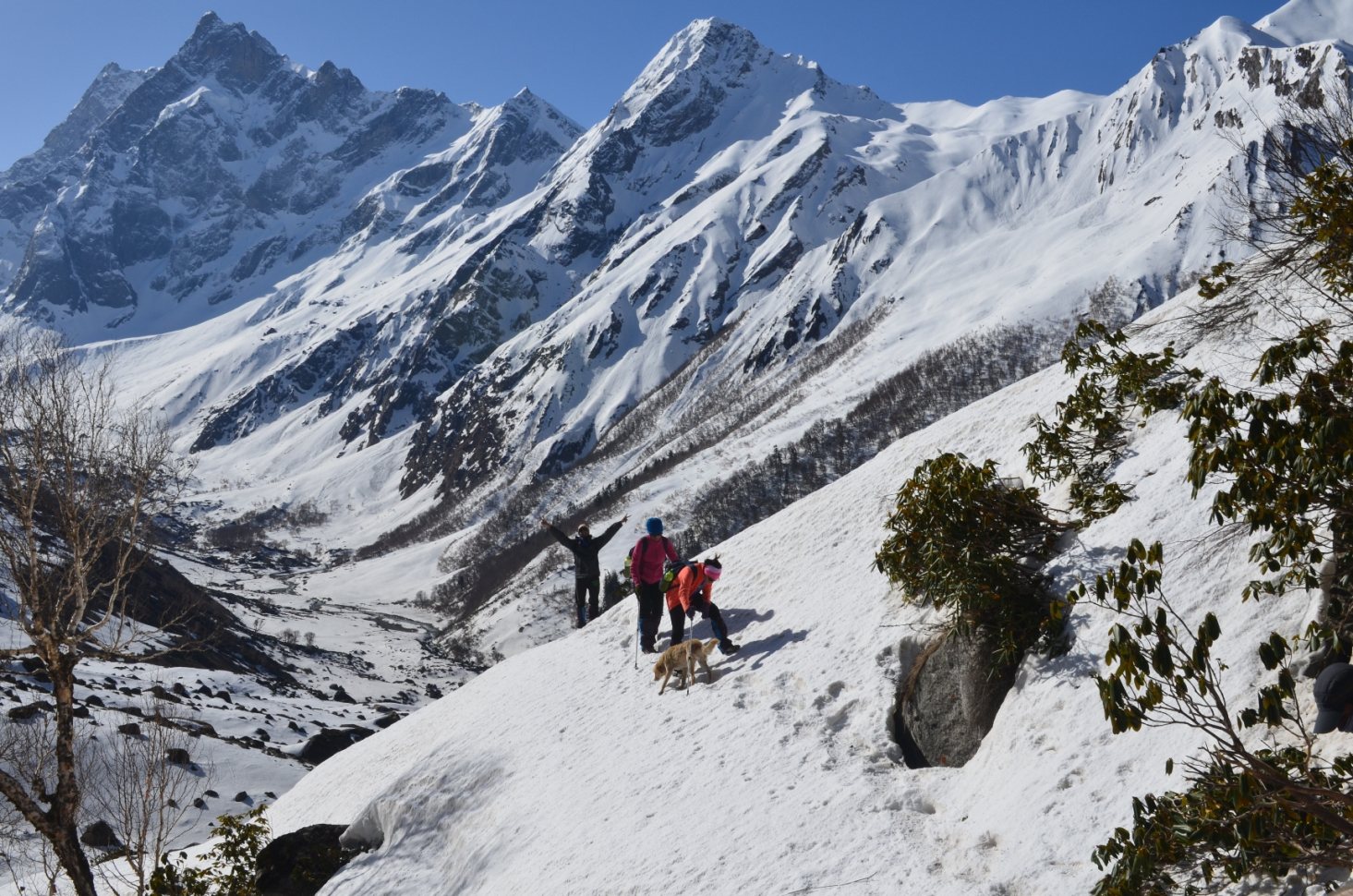
You will require warm clothing throughout the winter Har Ki Dun Trek, which calls for suitable, well-made uniform clothing.
Only warm clothing will keep you safe on trek feet because winters are often cold.
Before embarking on a trek, always get information from the organization you are booking it with about what to bring.
Since the temperature drops daily during the winter, carrying warm clothing will be quite beneficial.
The Summer Season
The Har Ki Dun Trek in the summer is a really unique experience because of the great weather and landscape.
It is not necessary to carry hot clothing for a summer walk; instead, you should bring warm clothing. However, it is also important to bring all the equipment you will need for trekking.
Three pairs of trekking clothes is necessary, especially the poncho, which you must bring for each season.
There is no need for hot gear throughout the summer months because the temperature is consistently comfortable.
The Monsoon Season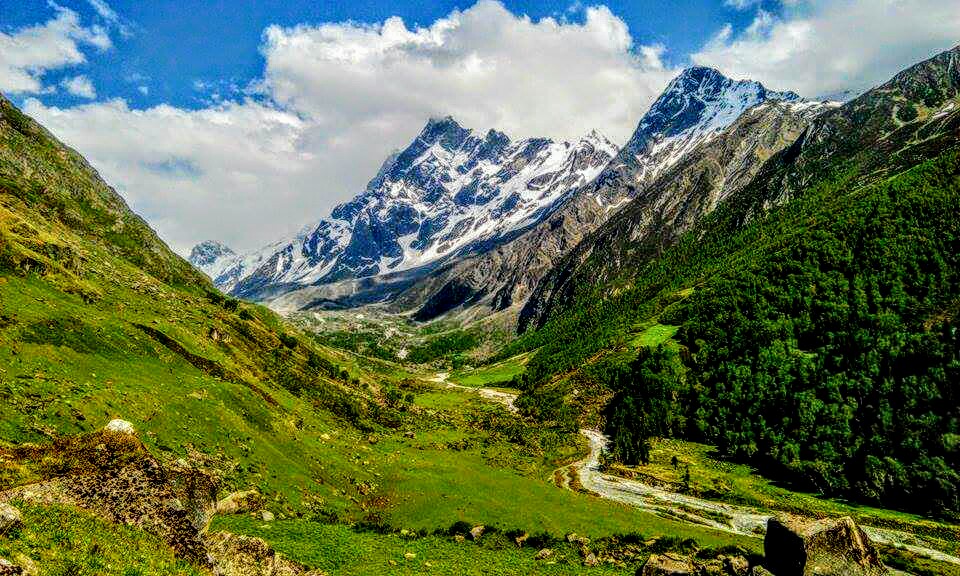
It periodically rains on the Har Ki Dun Trek during the monsoon season, especially in the Uttarakhand Himalayas, so carrying dry clothing is ideal because it dries rapidly even when wet.
You need to pack at least three pairs of clothes at this time. You don't need to pack anything too warm for the monsoon journey; I can hike with my hiking pants and t-shirt. The day is a comfortable temperature for you, and the morning and nighttime are only somewhat chilly. It will be simple for you to get information about each season before embarking on any the expedition.
Trekkers should be aware of these; you can ask us anything at any moment, temperature, weather, degree of difficulty, the beginning and end points of the journey, transportation, the hike's viewpoint, the ideal time to visit, how to get there, the distance of the trek, etc. Trek Site, Keep in mind this information before you depart.
Starting the Har Ki Dun trek is an experience that will change your life, and Indiantreks makes sure that your experience is as simple and enjoyable as possible. They're the perfect choice for the following reasons:
Expert Guides
Professional trekking guides with a wealth of knowledge in the Har Ki Dun area are provided by Indiantreks. A comfortable and secure trekking trip is guaranteed by their deep knowledge of the surroundings, plants, and wildlife.
Tailored Itineraries
The carefully designed pathways create a balance between leisure and action, leaving ample time to take in the splendor of the Himalayan scenery.
Exceptional Safety Standards
Indiantreks prioritizes safety. They provide excellent trekking equipment, regular physicals, and protocols for handling emergencies or altitude sickness.
Eco-Friendly Trekking
Indiantreks is dedicated to travel that is environmentally friendly. They support local communities and ensure minimal environmental effect by promoting "Leave No Trace" methods.
Reasonable Affordable Packages
The Har Ki Dun trek is now easily accessible for all trekkers thanks to Indiantreks' superior customer service and value for money.
Minimum Group Sizes
Trekkers benefit from greater individual attention, a more personalized trekking experience, and less environmental impact on the trail when group sizes are fewer.
Immersion in Heritage
Trekkers can learn about traditional Himalayan lives and customs by visiting old villages like Osla, which is one way Indiantreks incorporates local culture into the entire journey.
Tasty and Delicious Meals
During the trek, they provide freshly made, hygienic and nutritious meals that accommodate various dietary needs.
Flexible Options for All Skill Level
Regardless of your degree of experience, Indiantreks adapts the pace and direction to fit your needs and make sure the journey is enjoyable for all.
Charming Campsites
Along the Har Ki Dun route, Indiantreks selects some of the most scenic camping spots, providing breath-taking views of green valleys and snow-capped peaks.
Experienced Local Team
The experienced local guides and porters that Indiantreks collaborates with have extensive knowledge of the area and will enhance your trip with their knowledge and adventures.
Positive Testimonials and Reviews
Indiantreks has an established list of satisfied clients, as seen by the positive evaluations that emphasize their outstanding services and remarkable trekking adventures.
The Har Ki Dun Valley is a picturesque location in the Garhwal Himalayas, situated in the Uttarkashi district of Uttarakhand, India. Known as the "Valley of Gods," the valley is well-known for its breathtaking natural beauty, traditional culture, and small villages like Osla and Gangaad. Travellers can get a glimpse of the region's unique heritage by exploring these villages.
Osla Village Location: A charming village on the way to Har Ki Dun, Osla is situated at an elevation of about 2,600 meters. Many trekkers begin their journey in Taluka, which is the starting point for the trek.
Special Features: Osla is well-known for its historic wooden temple honoring the Someshwar. The unique belief system and style of architecture of the villagers, which are influenced by the local cultural history, are reflected in this temple.
Here, the traditional Himalayan craftsmanship is displayed through the intricately carved wooden dwellings.
The residents of Osla lead a modest, sustainable existence, adhering to their unique traditions and customs.
Activities: Travelers can engage with locals, experience their traditional agricultural methods, and take in incredible views of lush surroundings and mountains covered in snow.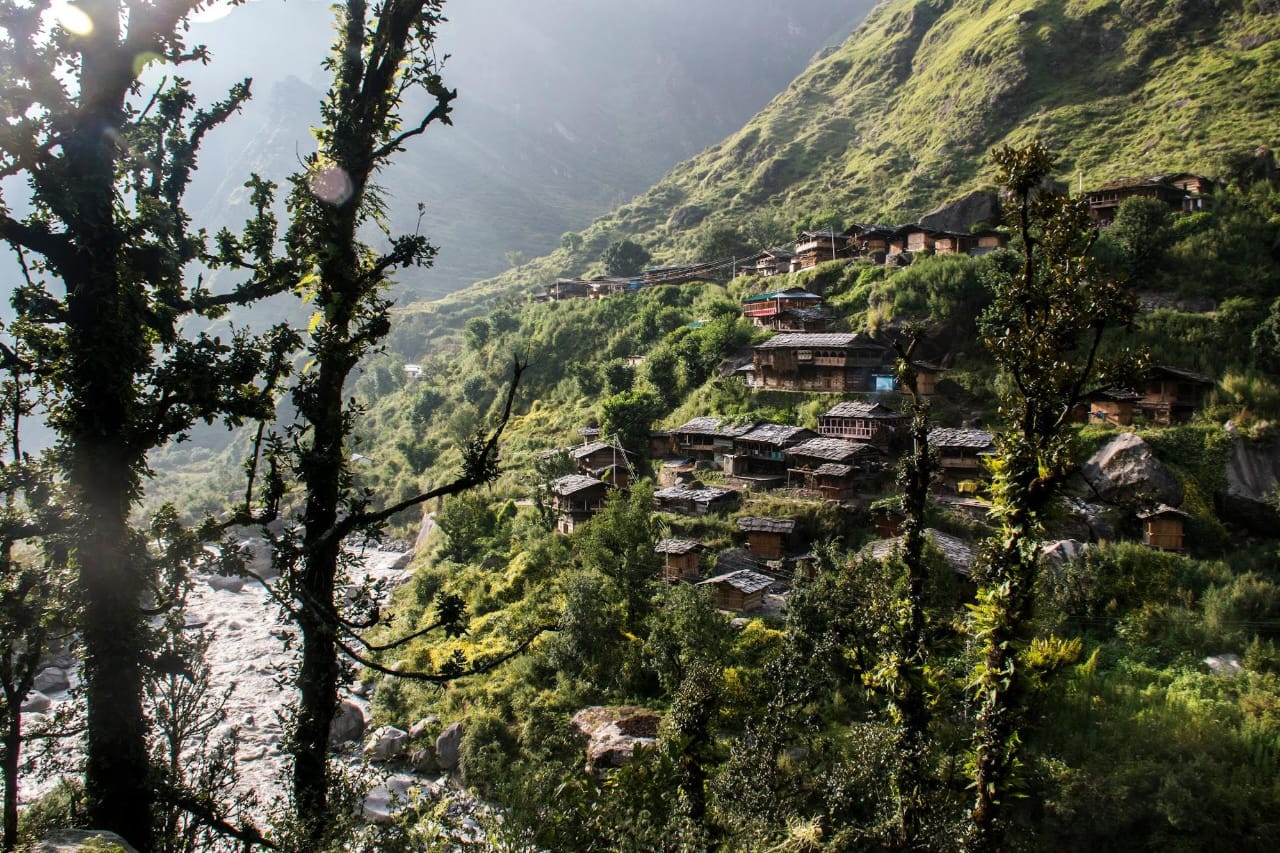
Gangaad Village Location: Gangaad is another small, peaceful village hidden away in the Har Ki Dun Valley, a little lower than Osla.
Unique Features: With its traditional wooden homes and rustic attraction, Gangaad offers an equally relaxing experience. Because fewer visitors travel it than Osla, it is the perfect place for people looking for privacy and a genuine cultural experience. The village is the starting point for more trekking expeditions in the Har Ki Dun Valley.
Activities: Highlights of a visit here includes exploring the village's surroundings, chatting with friendly inhabitants, and taking in expansive landscapes of the nearby peaks.
Lifestyle and Culture
Agriculture and animal husbandry continue to be the primary sources of revenue in both villages, which maintain their traditional ways of life. The people there are friendly and open, and they frequently want to share their traditions and culture with travelers. Both villages' architecture, which has wooden homes with slate roofs that are meant to survive the severe Himalayan winters, is an indication of the region's history.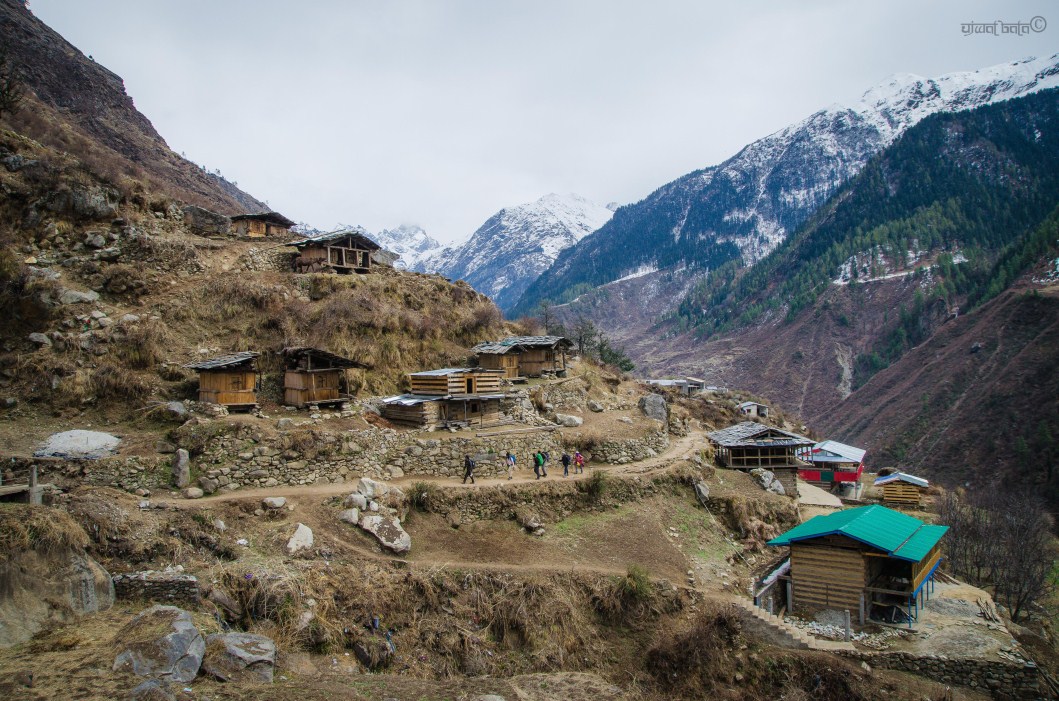
The difficulty of the trekking experience is moderate.
April through June and September through November are the best times to go.
The hike through the Har Ki Dun Valley offers a cultural immersion in these towns in addition to showcasing the area's natural splendor. Beautiful meadows, thick woodlands, and glistening streams abound along the route.
Traditional Culture in Osla Village: A Hidden Gem on the Har Ki Dun Trek
Osla village, nestled away in the magnificent Garhwal Himalayas, is a veritable gold mine of historic customs, distinctive architecture, and ageless cultural practices. Osla, which lies on the renowned Har Ki Dun get around, offers trekkers and travelers with a unique opportunity to see the daily life of a people who have a strong connection to the natural world and its spiritual roots.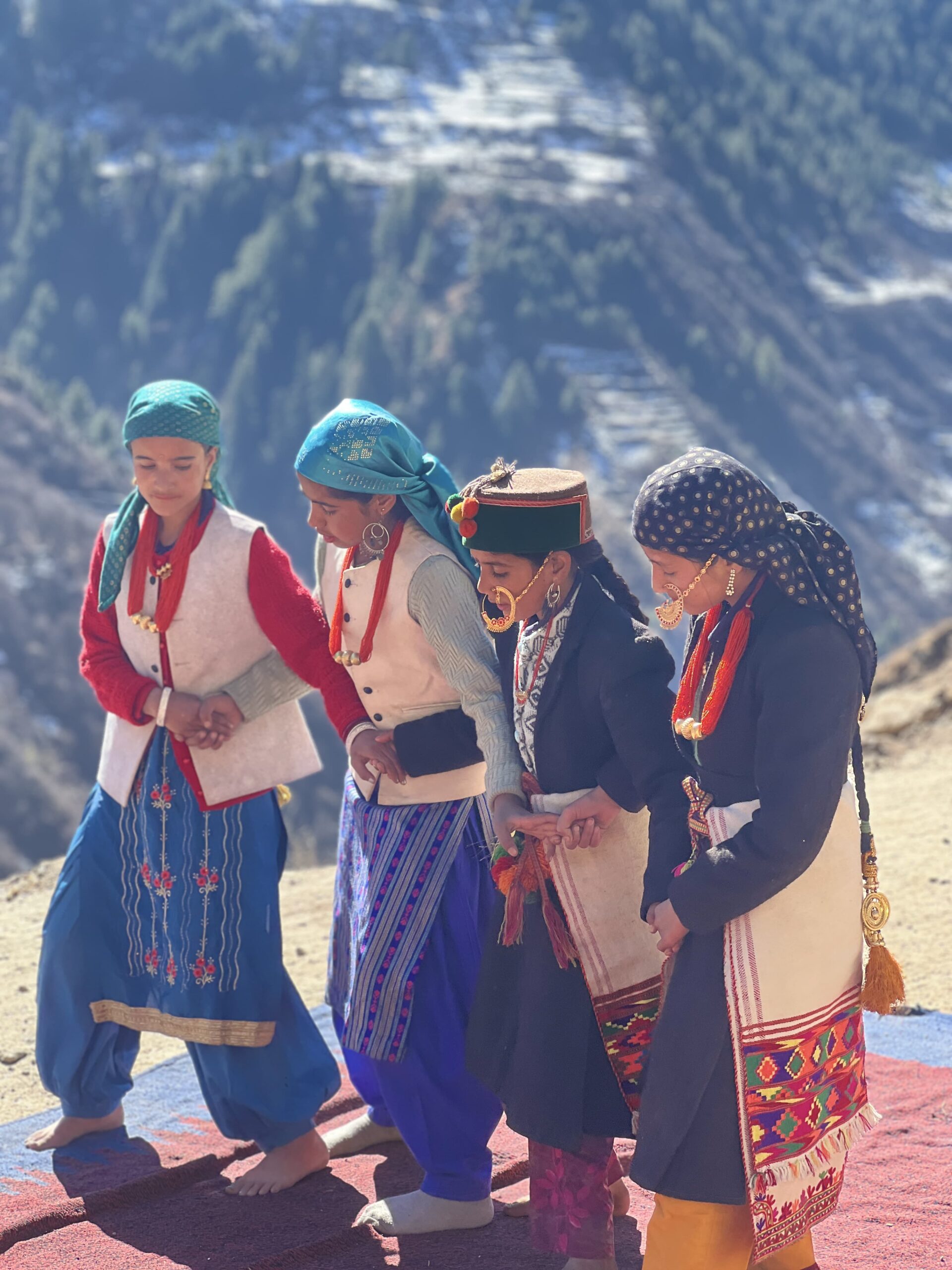
A Village Steeped in Mythology
Osla is renowned for its deep mythological significance. According to local belief, the village temple is devoted to Someshwar, the Pandavas, and the village has connections to the epic Mahabharata. Since Lord Shiva or Vishnu are worshipped in the majority of Himalayan temples, this belief distinguishes Osla. The wonderfully carved wooden temple is a focal point for religious and cultural events and showcases the people's artistic talent.
Osla Sawan Mela: A Celebration of Life and Nature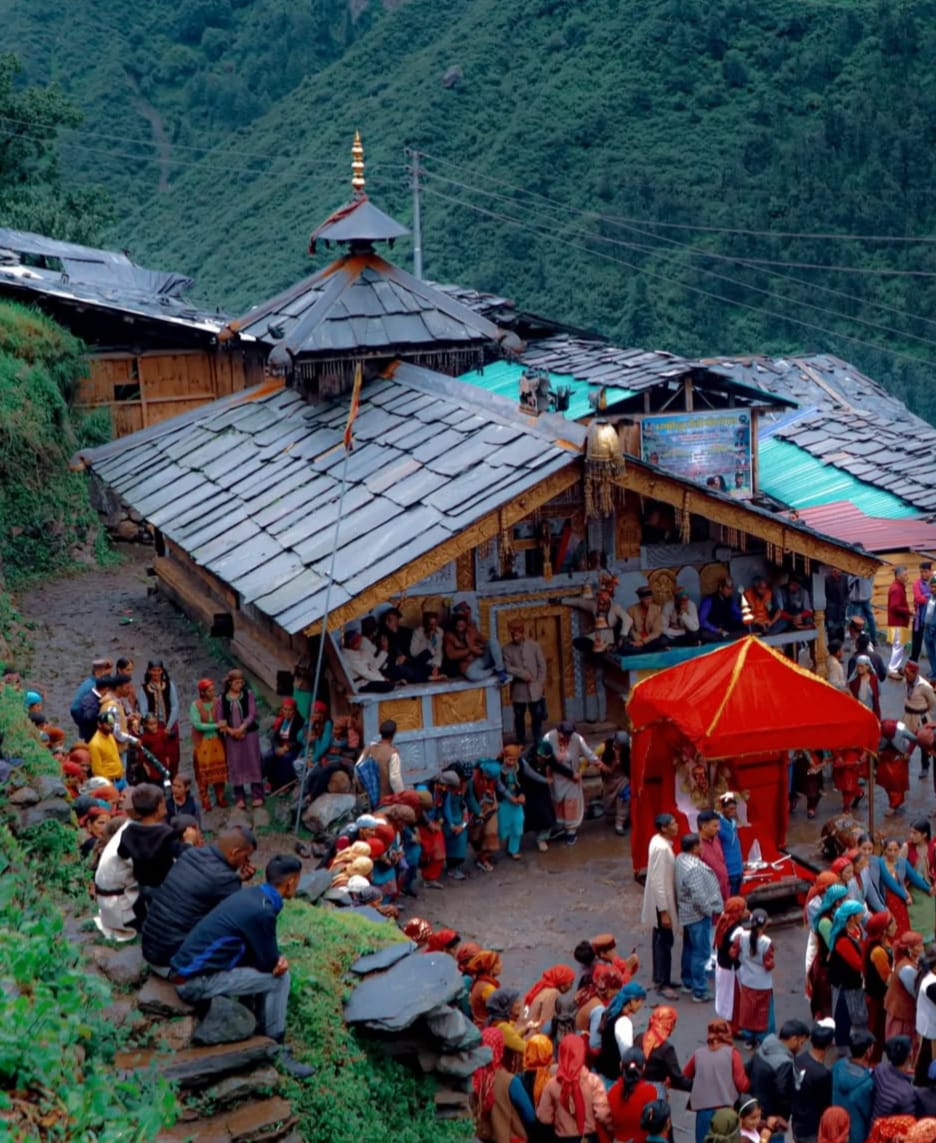
The Osla Sawan Mela, that takes place yearly from August 3rd to August 6th, is one of the most vibrant events in Osla village. This festival is a wonderful celebration of tradition, community, and nature.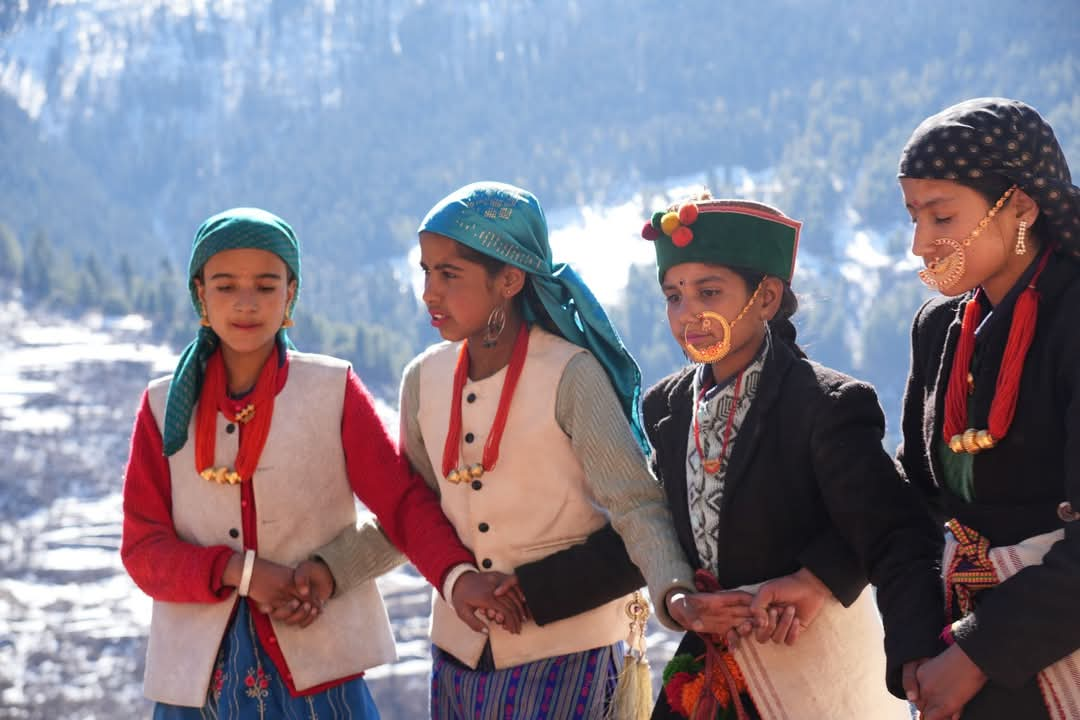
The entire village comes alive with dance, music, and traditions during the mela. Locals chant traditional hymns that reverberate across the valley, dance folk dances, and dress in traditional dress. Villagers use the mela as a chance to thank their gods for a plentiful crop and ask for blessings for the coming year. The Osla Sawan Mela offers travellers an opportunity to see a Himalayan celebration in its purest form, making it an event they will never forget. The mela provides an intimate connection to the core of Osla culture, whether it is through sampling traditional Garhwali food or taking part in traditional dances.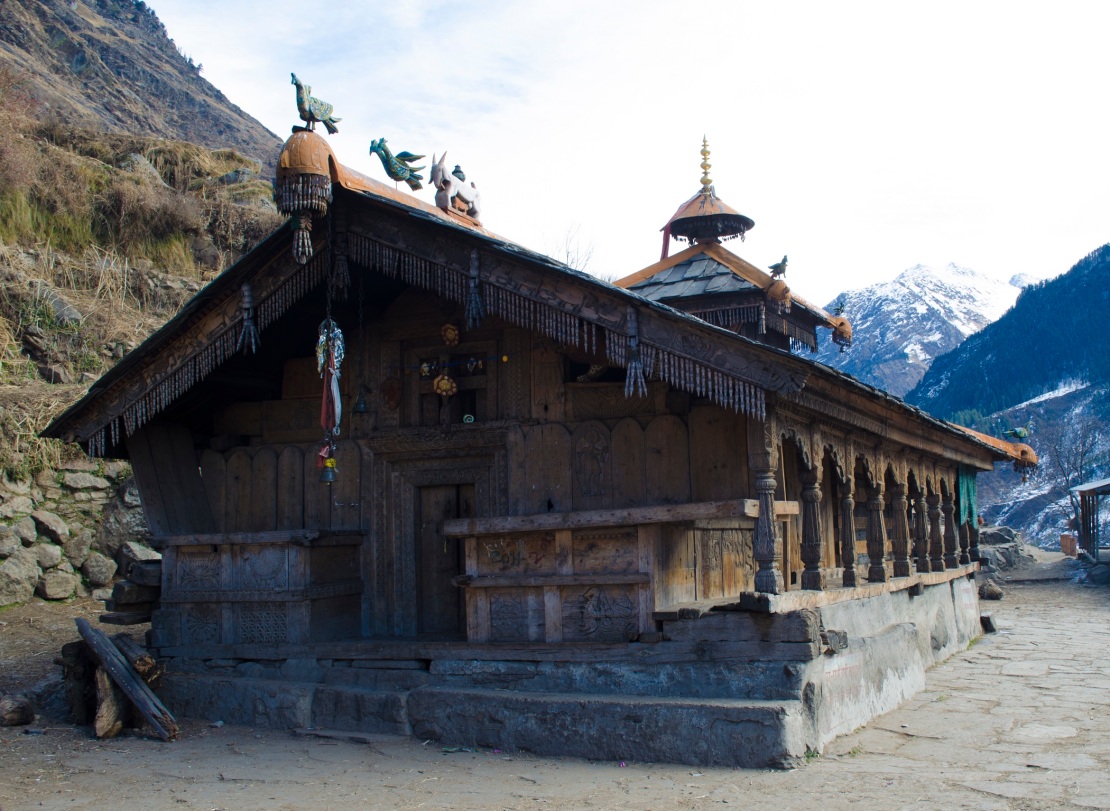
Osla the village is a must-visit location for everybody trekking through the Himalayas in search of adventure or exploring the region's heritage. Osla is a truly unique experience because of its celebrated previous, beautiful landscape, and welcoming locals.
Why You Should Visit Osla
For a glimpse of the village in full celebration mode, plan your visit during the Osla Sawan Mela, which takes place from August 3rd to August 6th. You will come away from this adventure with tales to share, memories to treasure, and a profound respect for the ageless traditions of this Himalayan heritage.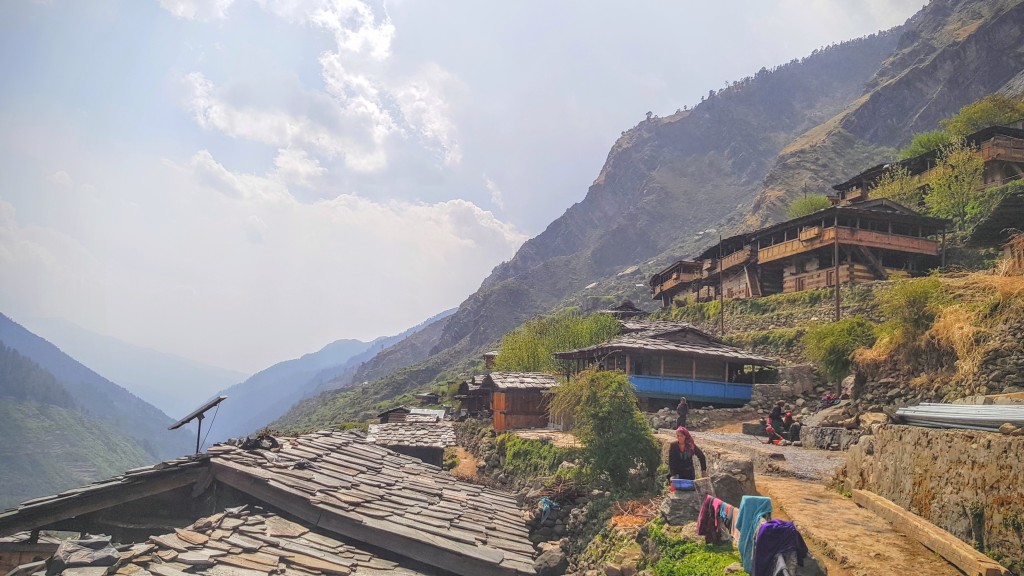
One of India's most fascinating treks is Har Ki Dun, which is hidden away in the Garhwal Himalayas. This walk, which is called the "Valley of Gods," offers a fascinating fusion of ethnic diversity, mythological significance, and scenic beauty. Har Ki Dun ought to be at the top of your list if you enjoy trekking or want to experience the untainted wilderness. This is the reason.
1. Spectacular Scenic Beauty
A visual paradise is Har Ki Dun. Each phase of this trek reveals various scenery, from snow-capped peaks and lush meadows to deep pine woods and glittering rivers. With its colorful flowers and historical villages, the valley is a photographer's and nature lover's paradise.
2. A Mythological Wonderland
The trek is rich in history and mythology. The Pandavas from the Mahabharata are said to have ascended to heaven by this path. With a story from the past told around every curve, walking these pathways is like entering an epic story.
3. Perfect for Beginners and Experienced Trekkers
Because of its intermediate in nature challenging, Har Ki Dun is both accessible to beginners and thrilling enough for experienced trekkers. It is the ideal starting point for Himalayan trekking because of the clearly established routes, regular climbs, and reasonable distances.
4. Rich Flora and Fauna
A wide variety of wildlife and plants may be discovered in the valley, which is a part of the Govind Wildlife Sanctuary. Look for endangered Himalayan birds, langurs, and, with luck, musk deer. The richness of the refuge gives your hike a thrilling new dimension.
5. Immerse Yourself in Local Culture
A glimpse into the unique ways of life of the surrounding villages can be found at Har Ki Dun. Traditional architecture, customs, and hospitality are abundant in the villages of Osla and Sankri. Talking to the people is a cultural encounter that is just as enlightening as the actual trek.
6. Year-Round Trekking Destination
Har Ki Dun can be visited virtually year-round, however the majority of Himalayan trek are seasonal. Every time of year has its own appeal, whether you go in the spring to witness the valley's blossom, the summer for unobstructed vistas, the fall for colorful foliage, or the winter for a wonderland covered in snow.
7. An Opportunity for Adventure and Solitude
Har Ki Dun is still comparatively uncrowded in comparison to highly marketed trekking routes. As a result, you may truly feel the serene beauty of the Himalayas and take your time enjoying the journey.
8. A Photographer’s Dream
Har Ki Dun offers many opportunities for gorgeous photography, from the sunrise over the Swargarohini peaks to the old wooden cottages of Osla. The valley's combination of hues, light, and shadow is simply wonderful.
Conclusion
The Har Ki Dun journey is an experience that connects you with nature, mythology, and local culture in addition to offering you a chance to travel through stunning landscapes. Har Ki Dun guarantees an amazing experience whether you're looking for adventure, peace, or a closer bond with the mountains. It could be the journey of a lifetime, so gather your belongings, put on your boots, and head out to discover this magical valley!
The majority of travelers consider the hike to Har ki Dun the journey is a moderate one that is appropriate for both beginner and expert trekkers. It offers a gorgeous and rather easy trek in Uttarakhand, India's western Garhwal Himalayas.
The trek typically takes six nights and seven days to finish, with a total distance of about 47 kilometers. Along with some steep sections, rough trails, and sporadic river crossings, the trail features modest ascents and descents. However, the Har ki Dun walk is easier for novices to handle because of its more gradual ascent when compared to other high-altitude treks in the area.
At about 4,200 meters (13,780 feet) above sea level, the Jaundhar Glacier is the highest point on the journey. Unless you are extremely sensitive to altitude or have a pre-existing ailment, altitude sickness is usually not a serious worry on this climb.
While endurance and physical fitness are essential for every trek, including Har ki Dun, it is best to get ready by exercising frequently and doing some pre-trek training to increase your strength and endurance. Additionally, it is advised to appropriately acclimatize by taking days off and drinking plenty of water when trekking.
The Har ki Dun walk is a trekker's paradise on earth, a ladder to heaven that will wow you with its beauty. Its accessibility in both the summer and the winter is what makes it such a fascinating treks. Situated on the western edge of the Garhwal Himalayas, the Har Ki Dun Valley is a popular destination for both climbers and trekkers. Beautiful views of the Swargarohini group of peaks may be seen during the walk to Har Ki Doon Valley. One of the main sources of the Yamuna River System is the Har Ki Dun catchment area.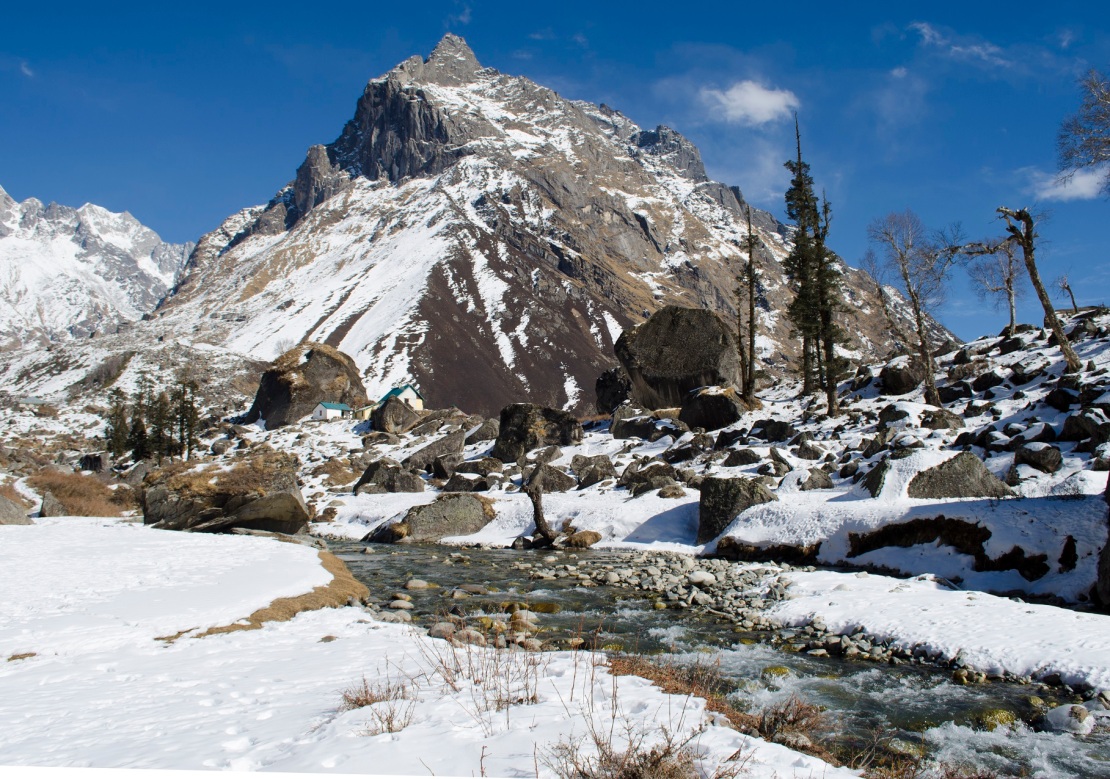
The Har Ki Dun journeys passes through some of the most breathtaking pine forests and alpine meadows, which are a visual feast. When the light peeks through the clouds throughout the winter, the snow-covered paths of the Har Ki Dun Trek are mesmerizing. The Valley of Gods, one of the oldest treks in the Himalayas, is thought by some to be the same path the Pandavas took on their way to paradise in the Mahabharata. You may experience trekking in Uttarakhand, the land of gods, like never before thanks to Swargarohini, the snow mountain that dominates the Har Ki Doon Trek and bears a legacy of the famous ladder to heaven.
What Can You Expect At Har Ki Dun Trek
The Har Ki Dun walk, which is rated as an easy to moderate walk, leads you through remote traditions and one of the oldest trekking trails in the Himalayas. On the Har Ki Dun route, snow is expected from December to March. In April, the snow begins to melt, allowing lush greenery to emerge and come to life. Despite being an easy grade journey, Har Ki Dun requires physical fitness because it covers a comparatively greater distance than other easy grade treks. It can occasionally be challenging to locate the Har Ki Doon trail, but don't worry—our staff of certified mountaineering trek leaders and guides are familiar with the route and will make sure you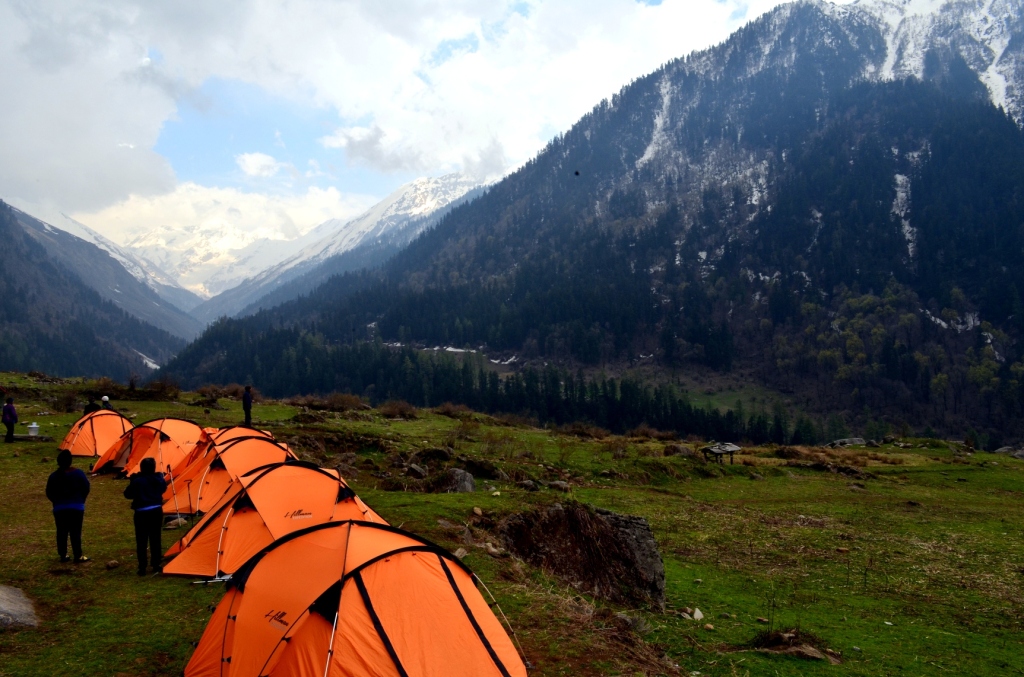
Along with a wealth of natural beauty and charming Himalayan communities where you may watch their way of life in such distant places, the Har Ki Dun trek is expected to offer a rich array of flora and animals. You will pass a few river crossings as you stroll alongside the stunning Supin River, making it a stunning trek in India. Black Peak, Hata Peak, Bandarpoonch, and the Swargrohini series of peaks offer significant peak views.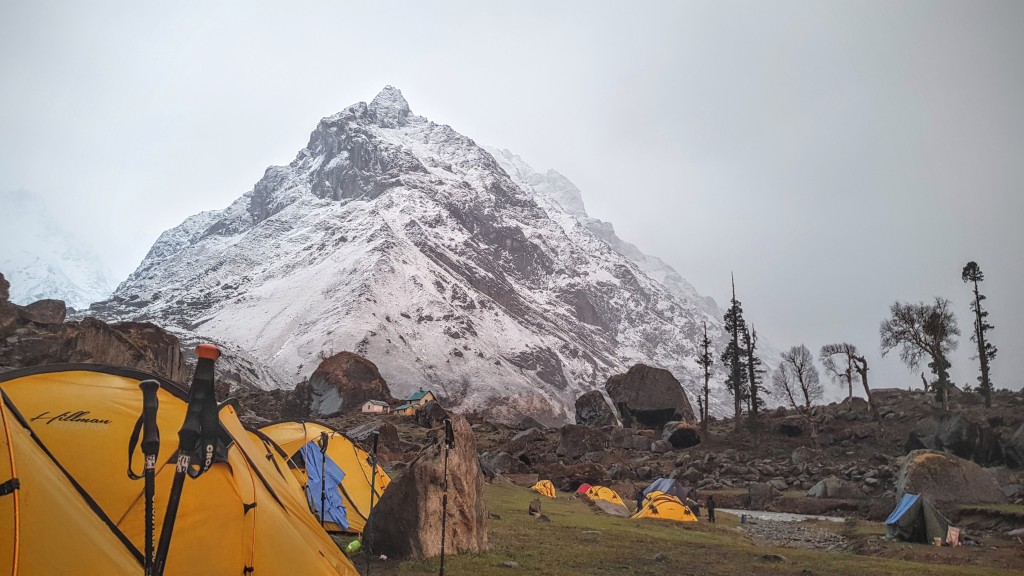
For the Har Ki Dun journey, it is suggested to bring suitable footwear and an adequate supply of warm clothing. Being ready with the appropriate equipment is necessary because the temperature can fluctuate significantly at high elevations. Because we value preserving the natural equilibrium of the mountains, we oppose the use of plastic bags and other plastic products that could pollute the natural world. If you need more information or individualized attention, mountaineering trained trek leaders and guides are on hand. Our first goal is safety.
₹ 10,499/PP
7D - 6N | Dehradun to Dehradun
- Pickup Time : 7:30 To 8:00Am
- Dropping Time : 7:30 To 8:00Pm
- Pickup & Drop Location : Dehradun Railway Station
Need Help Talk to our Mountain Expert
- +91- 7310954451 | +91-7300900108
BE UPDATED FOR THRILLING EXPERIENCES!
Follow Us On
Ask Your Query Here !!
BE UPDATED FOR THRILLING EXPERIENCES!
Follow Us On
➩ Trekker Stories And Experiences With Indiantreks
It was a wonderful adventure, and Indian Treks offered excellent service. The staff members had a wealth of expertise and understanding, such as how to manage large groups and ensure the safety of individual trekkers.

